Aero-Flite LEADING BY EXAMPLE

AFF SEATTLE 2023
SHOW HIGHLIGHTS


AFF SEATTLE 2023
SHOW HIGHLIGHTS
APPLICATORS BEGIN FIREFIGHTING




Experience. Responsibility. Integrity.
For sixty years, PHOS-CHEK® has represented innovation in support of firefighting operations around the world. This innovation has always been driven by the needs of the firefighting community – helping them operate effectively and safer when they risk their lives to protect our forests, our communities and our lives.


At Perimeter Solutions, we couldn’t be prouder of our work as PHOS-CHEK celebrates its 60th anniversary, and we are committed to continuing our innovation and support for the next sixty years!
Trusted. Solutions That Save.

perimeter-solutions.com
















P.O. Box 850 • Perry, GA 31069 USA
475 Myrtle Field Rd. • Perry, GA 31069 USA
PHONE / FAX:478-987-2250
info@marsaylmedia.com • aerialfiremag.com
AERIALFIRE IS PUBLISHED BY
PUBLISHER:
Graham Lavender - graham@marsaylmedia.com
EDITOR IN CHIEF:
Ryan Mason - ryan@marsaylmedia.com

ACCOUNTING/ADMINISTRATION:
Casey Armstrong - casey@marsaylmedia.com
DISPLAY ADVERTISING:
Melanie Woodley - melanie@marsaylmedia.com
PRODUCTION:
Daniela Constantino - daniela@marsaylmedia.com
CIRCULATION:
Mary Jane Virden - maryjane@marsaylmedia.com
© Copyright 2023 AerialFire retains all rights for reproduction of any material submitted, to include but not limited to articles, photographs, emails and bulletin board posts. All material remain the copyright of AerialFire. No part of this publication may be reproduced, in part or whole, without the written consent of the publisher. Editorial published do not necessary reflect the views of the publisher. Content within AerialFire is believed to be true and accurate and the publisher does not assume responsibility for any errors or omissions. Unsolicited editorial manuscripts and photos are welcomed and encouraged. We cannot be responsible for return unless submissions are accompanied by a stamped, self-addressed envelope. Advertising deadline is 12 noon, on the 1st of the month preceding the month of publication.
AerialFire (ISSN 1081-6496)

Published
Aero-Flite’s substantial investment in continual improvement in their initial and ongoing training moves the dial on industry training.



 Ryan Mason ryan@aerialfiremag.com
Ryan Mason ryan@aerialfiremag.com
As an aviator, once you have reached a certain level of experience, you have undoubtedly felt pressure to fly at one time or another. The facts remain that pressure to fly is killing pilots. Without some significant change, not just in aerial firefighting but in aviation in general, pilots will continue to die because a need or want of a non-pilot has outweighed sound decision-making and all of the reasons why a flight shouldn’t take place.
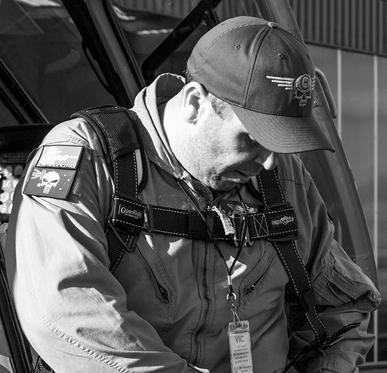
During the recent inquest into the C-130 crash occurring currently in Australia, a pilot gave testimony that while he did not feel pressure to fly from his employer, he did, in fact, feel pressure to fly from the agency that hired the employer as a contractor to fly during Australia’s Black Summer fires in January of 2020. While the inquest is ongoing, those familiar with the error chain leading up to many accidents may attribute pressure to fly as a potential contributing factor to the crash that took the lives of three aerial firefighters.
The aerial firefighting industry is a player in a more significant problem that permeates the entirety of aviation. Probably one of the most famous pressure-to-fly crashes is the crash of the S-76 that killed Kobe Bryant, his daughter, and five others just three days after the Australian C-130 crash. In that incident, the highly experienced pilot took

off in conditions rapidly deteriorating into IMC conditions, despite not being current on IFR conditions. His celebrity clientele needing to get to a location was no doubt a significant contributing factor to the pressure to take the flight.
Helicopter emergency medical aircraft have suffered many incidents leading to loss of life over the years as a result of “helicopter shopping” by dispatchers with zero aviation or weather knowledge that continue to shop around every air medical aircraft in the area rejection after rejection for weather until a pilot eventually thinks they can make the flight. On many occasions, this kind of action has led to a fatal accident. However, the HEMS industry has gone to great lengths over the years to ensure that pilots have the ultimate ability to reject a flight for weather; the white knight thought process that many of us in the emergency service world know well could often cloud judgment.
No matter which segment of the aviation industry suffers a loss, its ripple effects spark a conversation that takes over our section of social media for a week or two. Then it peters off into nothing until the next one. I am not naive enough to believe that the industry will stop putting pressure on pilots to fly in one way or another, directly or indirectly, implied or
otherwise. I hope that pilots in the industry put themselves above whatever reason they have for taking a flight that may cost their lives.
I hope that eventually, the need for living overrides the need for employment. One thing the pilot shortage has shown is that there are now more employers looking for pilots than the other way around, as it has been for decades. I hope that eventually, there are enough quality jobs that those who feel pressure to fly can immediately down tools, hand in notice, and find a new employer that prioritizes safety over profit.
United States based aerial firefighting bodies, be it federal, state, or local, do a decent job relating to safety processes and procedures, although there is always room for improvement. However, lessons can be learned from the inquiry in Australia. As the fire risk continues to grow in other parts of the world that are seeing increased fire activity and thus using more and more contract resources like Greece, Chile, Australia, and other countries, safety still needs to be the first consideration for aerial firefighters before taking off into conditions that could prove dangerous.
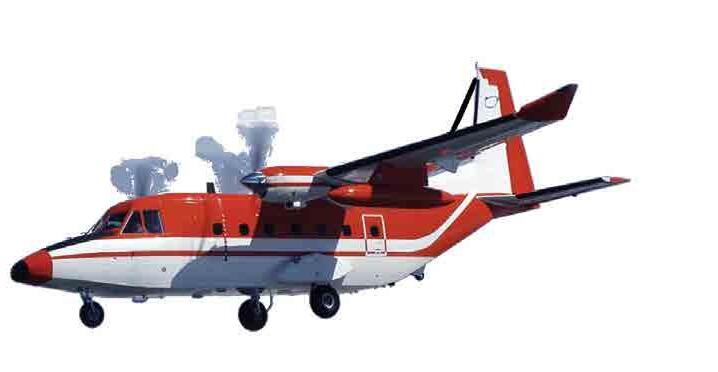


Fly safe,

Services we provide for the TPE331: Complete Overhaul
Hot Section Inspections
Gearbox Inspections
Complete Test Cell Service
24 Hour AOG Field Service
- Including Engine R&R

Services we provide for the GTCP36: Hot Section Inspections

APU Repair
Compressor Carbon Seal Replacement
Heavy Repair
24 Hour AOG Support
Maintenance Training

 An Erickson Aero Tanker MD-87 performs a drop during training near Fox Field, CA.
Photo by Aaron Maurer.
Australia’s Kestrel AS332 and Coulson’s Helitak 341 a CH-47 fighting fires in Australia.
Photo by Brian Wilson.
An Erickson Aero Tanker MD-87 performs a drop during training near Fox Field, CA.
Photo by Aaron Maurer.
Australia’s Kestrel AS332 and Coulson’s Helitak 341 a CH-47 fighting fires in Australia.
Photo by Brian Wilson.
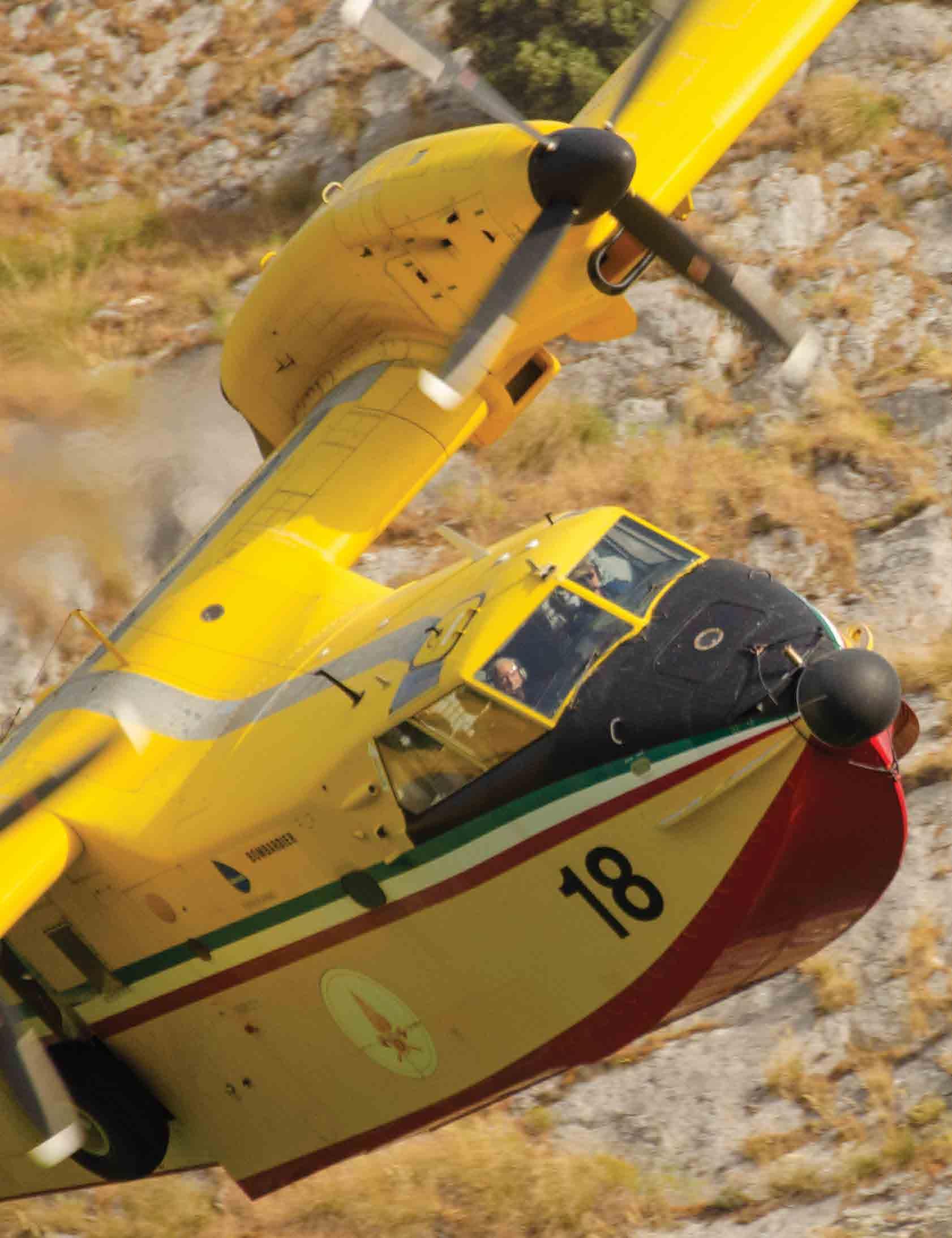 Tanker 18 banks for a drop in Italy. Photo by Eliana Pensato.
Tanker 18 banks for a drop in Italy. Photo by Eliana Pensato.

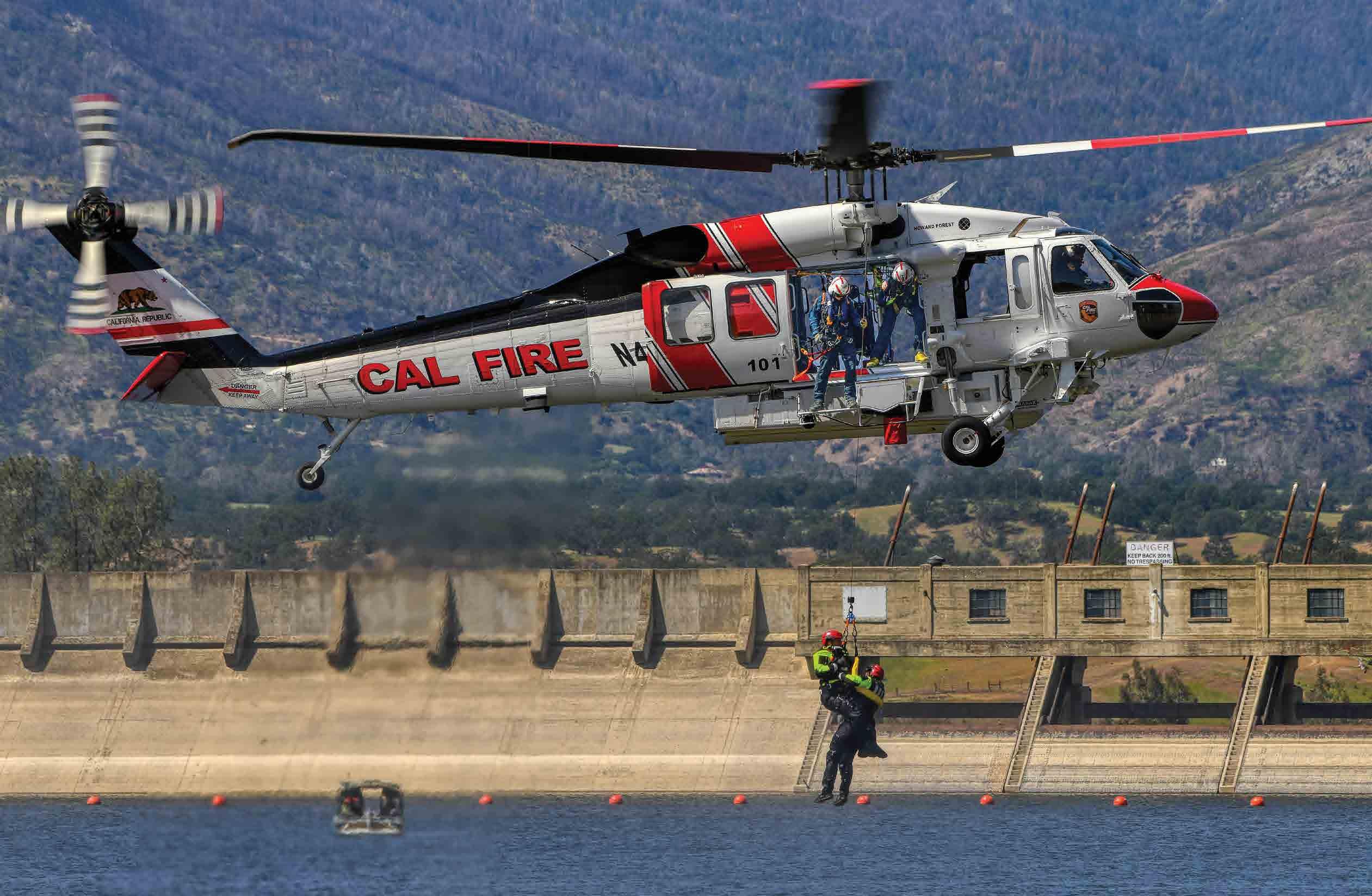 CAL FIRE’s Howard Forest S-70i conducts water rescue training.
Photo by Maureen Bonessa.
Tanker’s 912 and 914 prepare for the next flight as tanker 910 departs for another fire run in 2022. Photo by James Dunn.
CAL FIRE’s Howard Forest S-70i conducts water rescue training.
Photo by Maureen Bonessa.
Tanker’s 912 and 914 prepare for the next flight as tanker 910 departs for another fire run in 2022. Photo by James Dunn.

 A Conair FireBoss takes off after filling up in Canada. Photo by Mike Biden.
CAL FIRE’s Tanker 76 departs San Bernardino for another fire mission. Photo by Kaileen Hannigan.
A Conair FireBoss takes off after filling up in Canada. Photo by Mike Biden.
CAL FIRE’s Tanker 76 departs San Bernardino for another fire mission. Photo by Kaileen Hannigan.
The modular design of the PT6 has been documented and discussed in previous articles. We have talked about the rear module and the gas generator. Now let’s turn our attention to the front of the engine, called the power section. The power section does precisely that; it turns the air from the gas generator into power. Now we look closer at how air is turned into energy.
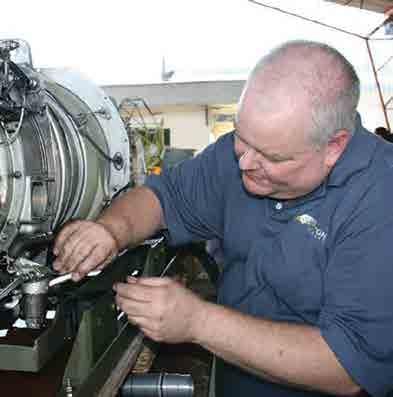
Simply stated, the power section comprises a turbine section and a gearbox. Much like the engine’s modular design, the power section can be looked at in modules itself. The rearmost subassembly or module is the power turbine. It comprises either one or two rotors (power turbine disks), depending on the engine model on a shaft. This module also includes the power turbine vane ring and power turbine stator housing. The shaft is the power turbine or PT shaft, and it runs through a housing where two bearings support it. Moving forward in the engine, the end of the PT shaft opposite the disk(s) is the 1st stage sungear. This is the entry point into the rear reduction gearbox section of the power section. Before looking at the reduction gearbox or
RGB, think about how fast the power turbines spin. They take all the hot compressed gases from the gas generator and use them to turn before that gas is exhausted from the engine. The power turbine speeds are in the range of 30,000 to 33,000 RPM. That is the speed that starts its way into the reduction gearbox.
The reduction gearbox contains two sets of gears and is built like our solar system. We have two sun gears in the center, surrounded by two planetary gears. Each gear set is housed in a housing: the rear and front RGB housings. As stated, the 1st stage sungear is attached to the PT shaft. As it turns, it drives the 1st stage planet gears. This set of gears is a group of three gears matched in weight within a certain tolerance. They are contained in a balanced carrier assembly and, on the outside, run inside a ring gear. The 2nd stage sungear is also attached to the first stage carrier. All the 1st stage assembly is contained in the rear RGB housing. This housing also includes the torque piston and cylinder, where the torque indication comes from. This completes the middle module of the power section.

The final module is the front RGB housing. Five planetary gears rotate around the 2nd stage sungear. These are the 2nd stage planet gears, and they are all matched by class and are housed in the 2nd stage carrier. The carrier is attached to the prop shaft. Now we are finally able to turn the prop shaft. Depending on the model, the final gear reduction is 14.5 to 17.5 of power turbine RPM to one prop revolution. Bearings on both ends support the 2nd stage carrier and prop shaft. The #5 bearing supports the carrier end. When you have a live wire or lightning strike, the path of the electricity most commonly taken is prop, prop shaft, and 2nd stage carrier. We typically find arcing damage on both the bearing and the carrier. The prop end of the prop shaft is supported by the #6 and, in large engines, the #7 bearing. Also housed in the front RGB are the drive gears for the prop governor, overspeed governor, and prop tach. All these gears and bearings in the reduction gearbox are why there is also a chip detector in the front housing. I stress to everyone to ensure their chip detector is connected and working, which we check every 100 hours.

Besides the chip detector, the other inspection items on the power section center around the exhaust duct, power turbine blades and temperature sensing system. I encourage everyone to pull a stack and look at the PT blades. If that is not possible, then at least put the borescope in and take a peak. You need to make sure that the blades look as you expect. Twenty years ago, an AD was issued regarding low-quality exhaust duct welds (AD 2002-23-13). I haven’t seen a poor weld in a while, but it is worth mentioning as it is a straightforward, one-time inspection if you have an older small engine.
Finally, we must discuss the temperature sensing system. The ITT or internal turbine temperature system is housed on the power turbine stator housing. There are 8 – 10 temperature sensing probes connected by a bus bar and connected to a wire harness to the outside of the engine. I had many calls about engines that exhibit intermittent turbine indicating problems. We test these components with a Barfield tester. We measure insulation resistance and loop resistance per the engine maintenance manual. I recommend having this done occasionally, especially when you have the power section removed. The insulation breaks down over time, potentially leading to intermittent problems.
Hopefully, you now have a good idea of the construction of the PT6A engine. I always find it fascinating that the engine was developed in the 1960s, and much of the technology developed during that initial engineering is still in use today. The PT6A continues to be one of the world’s most useful and dependable engines.
Robert Craymer has worked on PT6A engines and PT6Apowered aircraft for the past three decades, including the last 25+ years at Covington Aircraft. As a licensed A&P mechanic, Robert has held every job in an engine overhaul shop and has been an instructor of PT6A Maintenance and Familiarization courses for pilots and mechanics. Robert has been elected to the NAAA board as the AlliedPropulsion Board Member. Robert can be reached at robertc@covingtonaircraft.com or 662-910-9899. Visit us at covingtonaircraft.com.

There are certain accessories on the PT6 engine that people are familiar with for both good and bad reasons. The fuel control unit, or FCU, is probably number one. We have adjusted them, repaired them, and overhauled them. Almost everyone that has owned or operated a PT6 has had to do something with an FCU at one point or another. Number two on the list is the prop governor. It is the brains of your propeller operation. The FCU controls the engine, and the prop governor controls the propeller.
The engine accessory list includes the high-pressure fuel pump, oil-to-fuel heater, bleed air valve, ignition exciter, and start control or flow divider to go along with the FCU and prop governor. The newest engine models also now include the overspeed governor. This is the list of engine accessories on the PT6; what do you need to know about them?
The maintenance schedule for your engine accessories follows engine TBO and is identified in the service bulletin that specifies the time between overhaul and hot section inspection. The actual time frame in the service bulletin is TBO plus 500 hours. It would be best to incorporate

this guidance into your maintenance program. I always encourage everyone to follow these guidelines as a preventative step. It costs more to have an accessory issue during the time when you need the airplane the most.
Regarding accessories, each accessory has unique things to look at. Fuel control troubleshooting can be tricky. Sometimes, the inputs from the rigging are out of adjustment and do not allow the fuel control to perform the way you are asking it to. Other times it can be an issue with the fuel control itself. The FCU should be set to ensure proper gas generator speed. Adjustment is made to low (ground) idle and high (flight) idle. You also need to make sure that the engine accelerates and decelerates without issue. An issue that has come up lately is the manual override. Most installations in ag aviation do not have accommodations in the cockpit for manual override. One of the exceptions to this is an Air Tractor 802 used in firefighting. No lever in the cockpit doesn’t mean the lever on the FCU can be ignored. I typically view the manual override like a gas pedal. It runs fuel directly to the engine. Problems have arisen when the manual override lever on the fuel control has not been
properly secured after the fuel control is installed. You are pouring fuel directly into the engine. This has led to elevated and runaway temperatures and damage to the engine parts. Always ensure the manual override on the fuel control, even if no lever is in the cockpit, is stowed and secured in the proper position.
Fuel pumps can be manufactured either by Argo-Tech or Sundstrand. The fuel pump houses the fuel filter that must be replaced every 300 hours when used in agriculture. There is also an inlet filter that must be checked on this same schedule. I must point out that you DO NOT need to overtighten the filter housing. Sometimes it feels like the biggest guy used a 12’ cheater bar to cinch the filter bowl. The torque for installation of the filter bowl is measured in inch-pounds. It is not a huge amount of torque. By over-tightening the bowl, you run the risk of damage or destruction of the bowl the next time it must be removed. If you have a Sundstrand pump, you want to check it for oxide deposits. This can be accomplished by removing the drain line and fitting and inserting a cotton swab. There are instructions in your maintenance manual for this inspection. If a reddish-brown stain is evident, you will want to remove the fuel pump for further investigation.
The oil-to-fuel heater is basically a radiator with fuel on one side and oil on the other. The cooler fuel is heated slightly by the warm oil. This preheats the fuel for combustion. There have been some concerns and issues with the heater. Inside the heater is a vernatherm. My understanding is that it is continually moving inside the heater. Even when the engine is not running, it is active with temperature changes. This is causing wear of this component. To test your oil-to-fuel heater, run your engine above 72% until the oil temperature stabilizes. Shut the engine down, and within 15 minutes, check the temperature of the fuel bowl. If it is above 140F, the heater is not working correctly. This “overheating” of the fuel can lead to poor performance.
The propeller governor is much like the FCU. Many issues are caused by failing to set it up correctly during the rigging procedure. Various prop governing issues have been solved with a slight amount of fine-tuning on the rigging. One thing that we always caution people about is the beta valve. If you use a pressure washer to clean the outside of your engine, we caution you against spraying the prop governor. You can “push” water into the beta valve, which is just a steel valve inside the steel sleeve. Over the past couple of years, we have seen a handful of beta valves with severe enough corrosion that it prohibits correct propeller operation. There are inspection instructions for looking at the beta valve and cleaning it. We added it to the items we inspect on a 300hour inspection.

Then there is the bleed air valve. Those working on, in, and around PT6s have looked at a bleed valve during troubleshooting for power issues. The bleed valve dumps excess air between the axial stages and the centrifical stage of the compressor. Without it or when it malfunctions, you may have heard or felt a compressor stall. If it develops a leak, then the engine must work harder for the loss of air and won’t make power. I suggest to engine owners/operators that their bleed valve be tested, especially those with a rubber diaphragm, during their hot section inspection. One note of interest, Pratt & Whitney Canada is/has removed the closing point check from the engine maintenance manual. Yes, the old “coke bottle” test. There is a replacement test for the newer style Honeywell bleed valve. We have inquired about this, and it will be interesting to see where it all ends up.
The ignition exciter is one of those items that I have rarely witnessed issues with. It can happen, but it has been rare in my experience. Be cautious when testing your exciter and ignitors. There is a lot of electricity, and you want to make sure and exercise extreme caution.
Accessories are how we make the engine do what we want. Take care of yours, and it will take care of you. As you look at what maintenance needs to be performed this year, consider how much time is on your accessories.
Robert Craymer has worked on PT6A engines and PT6Apowered aircraft for the past three decades, including the last 25+ years at Covington Aircraft. As a licensed A&P mechanic, Robert has held every job in an engine overhaul shop and has been an instructor of PT6A Maintenance and Familiarization courses for pilots and mechanics. Robert was recently elected to the NAAA board as the Allied-Propulsion Board Member. Robert can be reached at robertc@covingtonaircraft.com or 662-910-9899. Visit us at covingtonaircraft.com.
Coulson's Tanker 139, registered as N619SW, has crashed while fighting fires in Western Australia. Tanker 139 was in Australia for the fire season as part of a multi-year contract with the Australian government.
The aircraft was believed to be on its third mission of the day, operating out of Busselton Airport in Western Australia, when it departed at 1532 local time for another mission. After reaching 29,000 AGL, the aircraft then descended to 700 feet to lay retardant lines, according to flight tracking, before the accident occurred at approximately 1616 local time.

The aircraft came down in an area near Fitzgerald National Park where both pilots, the only crew members on board the aircraft were able to self-extricate from the aircraft before being airlifted by helicopter to a local airport before being moved to a Perth hospital by the Royal Flying Doctors service, though initial reports advise that both pilots only have minor injuries from the crash.
Coulson Aviation released this statement shortly after the accident:
"One of our 737 FireLiners, Tanker 139, operating in Western Australia, was involved in an accident while tasked to a fire Monday, 6 February 2023. The aircraft had two crew on board at the time of the accident.
Both pilots walked away from the crash and have been medically assessed. Our thoughts and our immediate concern are for those team members and their families.
We’re very grateful the two team members on Tanker 139 are safe.
We are offering all the support we can to our local and international crews. We’re also grateful for the support being provided by our firefighting and aviation industry colleagues in Western Australia."
This is the second crash of a Coulson Aircraft since the 2019 loss of a Coulson C-130 in New South Wales.
In the wake of the accident, the Australian Transportation Safety Bureau (ATSB) released this statement:
The Australian Transport Safety Bureau (ATSB) has commenced an investigation into the collision with terrain of a Boeing Company 737-3H4, registration N619SW, in the Fitzgerald River National Park, Western Australia, on 6 February 2023.
At about 1616 local time, while conducting aerial firefighting operations, the aircraft collided with terrain after completing a fire-retardant drop. The 2 flight crew exited the aircraft with minor injuries, and the aircraft was destroyed.
The ATSB has deployed a team of transport safety investigators with experience in aircraft operations, maintenance, data recovery, and human factors to the accident site, to begin the evidence collection phase of the investigation. The initial focus of the investigation will be to interview the flight crew and witnesses, and recover and download the flight data recorder and cockpit voice recorder. Other investigation activities will include an examination of the aircraft and mapping the accident site, reviewing pilot and maintenance records, operator procedures, tasking arrangements, and the weather and environmental conditions.
Over the coming weeks, the collection of evidence will allow the ATSB to determine the scope of the investigation and gain a better understanding of its timeframe.
A final report will be published at the conclusion of the investigation. Should any safety critical information be discovered at any time during the investigation, the ATSB will immediately notify operators and regulators so appropriate and timely safety action can be taken.
The New South Wales Rural Fire Service has placed their 737 Fireliner ‘Marie Bashir’ in Western Australia to replace tanker 139 for the remainder of the Australian fire season while not in use in New South Wales.
Photo by Marty Wolin
Helitak Firefighting Equipment, a leading global provider of external helicopter firefighting tanks, announced on March 2, 2023, that the company had completed development on the FT-11K firefighting tank for use on the CH-47D firefighting helicopter.

The FT-11K tank has been in design and development for several years, culminating in the first round of experimental testing in March in California with launch customer Alaskabased Rotak Helicopter Services.
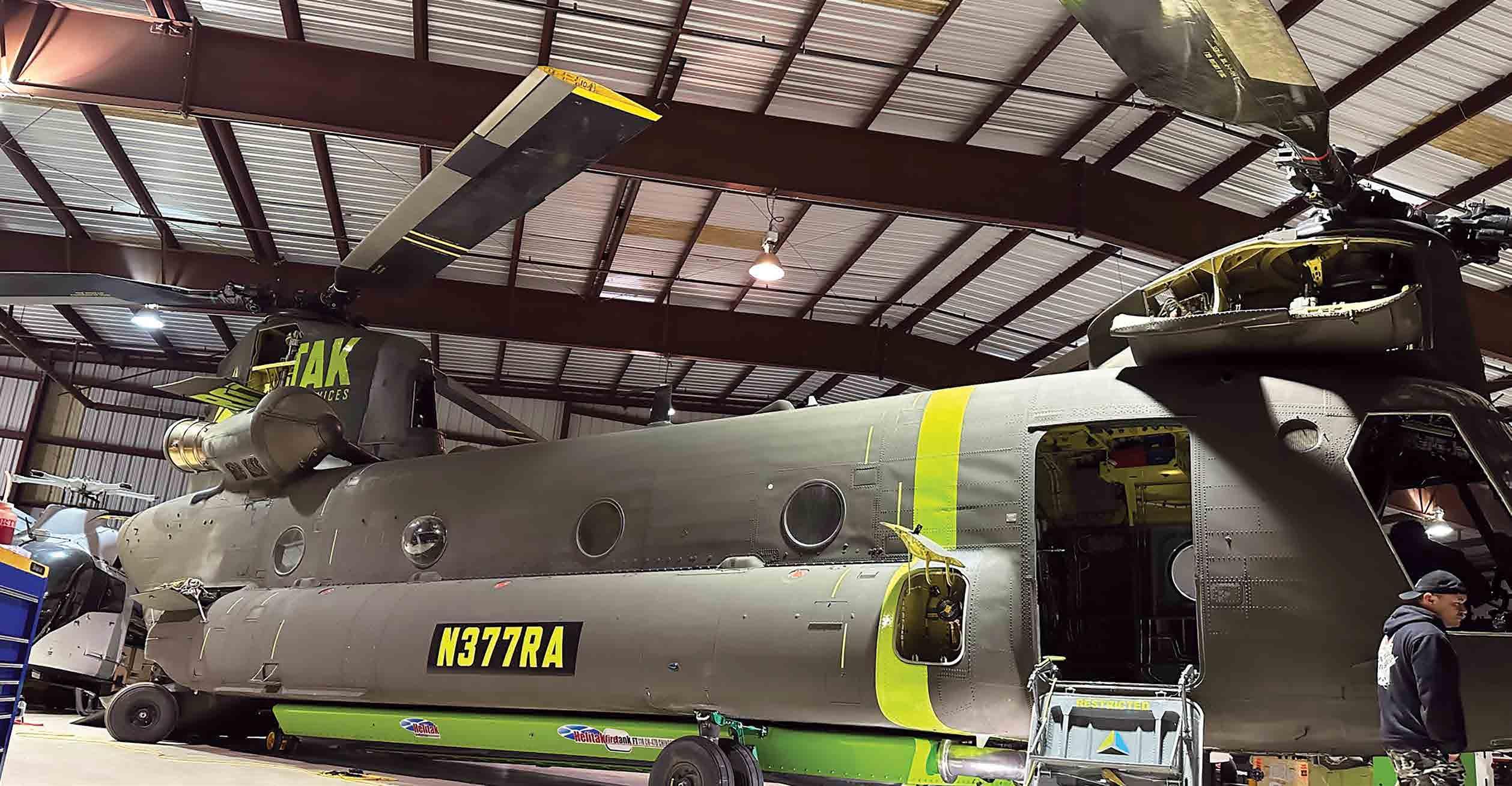
As a US-based operator of the Chinook, Rotak worked closely with Helitak to develop the innovative FT11K, a lightweight, collapsible belly-mounted fire suppression tank specifically designed for the helicopter.
The FT-11K tank features a water carrying capacity of 2905 US gallons/11000 liters that can be dropped on a fire in stages or in a single drop using the included Helitak load controller to disperse the load. The FT-11K can also take a 132-gallon/500-liter load of foam retardant if needed.
The FT-11K tank can take on a full load of water in 60 seconds with the included Hover Fill Pump, ready to return to the firefight, enabling Helitak tank-equipped CH-47 helicopters more time on the fireground dispersing more water in less time.
Full Feature List of the FT-11K
Tank Capacity: 2905G/11000L
Tank Empty Weight: 2030lbs/880kg
Tank Full Weight: 26455lbs/12000kg
Tank Height: 14”/36cm
Foam Retardant Capacity: 132G/500L
Power Requirements: 40Kva 110Vac 3 Phase/50Amps
28Vdc 30 Amps
Hover Fill Pump Time: 2641G/10000 Liters Per Minute
The Helitak FT-11K was displayed on Rotak’s CH-47D at this year’s Heli Expo show, in addition to the FT-1800-2500 for the Bell 205 and the FT-1300 for the AS-350 also on display at the 2023 show.



Leading aerial firefighting operators have joined together to form the first industry association dedicated to serving and fostering safety and standardization in the aerial firefighting community. The United Aerial Firefighters Association (UAFA) was founded at the end of 2022 as a non-profit association with the goal of informing policymakers and legislators about important issues concerning the increasingly critical nature of aerial wildland firefighting.
UAFA exists to bring together industry experts for collaboration and to provide a unified voice for the industry when speaking to state and federal stakeholders, fire agencies, and the public about wildfires and issues impacting the aerial firefighting community. The association is headquartered in Washington, DC, ensuring that members have a significant presence on Capitol Hill and at federal agencies.
“We’ve seen tremendous change occur in wildland fire aviation over the last twenty years,” says John Gould, President and CEO of 10 Tanker Air Carrier, one of the founding members of the UAFA. “As we look ahead, these challenges will only become more significant. While individual organizations within the industry will always be competitive, we believe the collective expertise represented within UAFA membership will help to ensure our industry continues to grow with the innovation, safety, and standardization necessary to deliver the best service possible to our customers.”
Gould serves as the inaugural President for the UAFA Board of Directors. Other Founding Members included on the Board are:
Vice President: Bart Brainerd, Firehawk Helicopters

Secretary/Treasurer: Brett L’Esperance, Dauntless Air
Director: Tim Sheehy, Bridger Aerospace
Director: Jennifer Draughon, Neptune Aviation Services
UAFA membership is open to companies who own or lease and operate aircraft, UAVs/drones, or provide aerial-delivered suppressants/retardants under contract with federal or state governmental entities for aerial firefighting services. Companies who provide products and services to the aerial firefighting industry, non-profits, and state and national agencies are also encouraged to join.
AerialFire serves the entire aerial firefighting industry reaching operators, pilots and tanker bases worldwide, including North America, Europe, Australia, Asia, Africa and South America. AerialFire, printed bi-monthly, is the only print publication that exclusively services the aerial firefighting sector. AerialFire also provides up to the minute news on our website at www.aerialfiremag.com and maintains an active social media presence on all platforms that is updated daily.


TracMap USA, a GPS guidance and job management company welcomed Twain Bodmer as Aviation Sales Manager, West Coast in February.
Twain comes from a fourth-generation wheat farming family in Walla Walla, Washington and has an aviation technology degree, commercial fixed-wing and helicopter licenses including an aerial applicator certificate.
“We’re excited to have Twain join our team. Her hands-on experience and passion for ag business will be a great asset for TracMap, especially for our aviation customers,” said Bill Thomas, Vice President Sales.
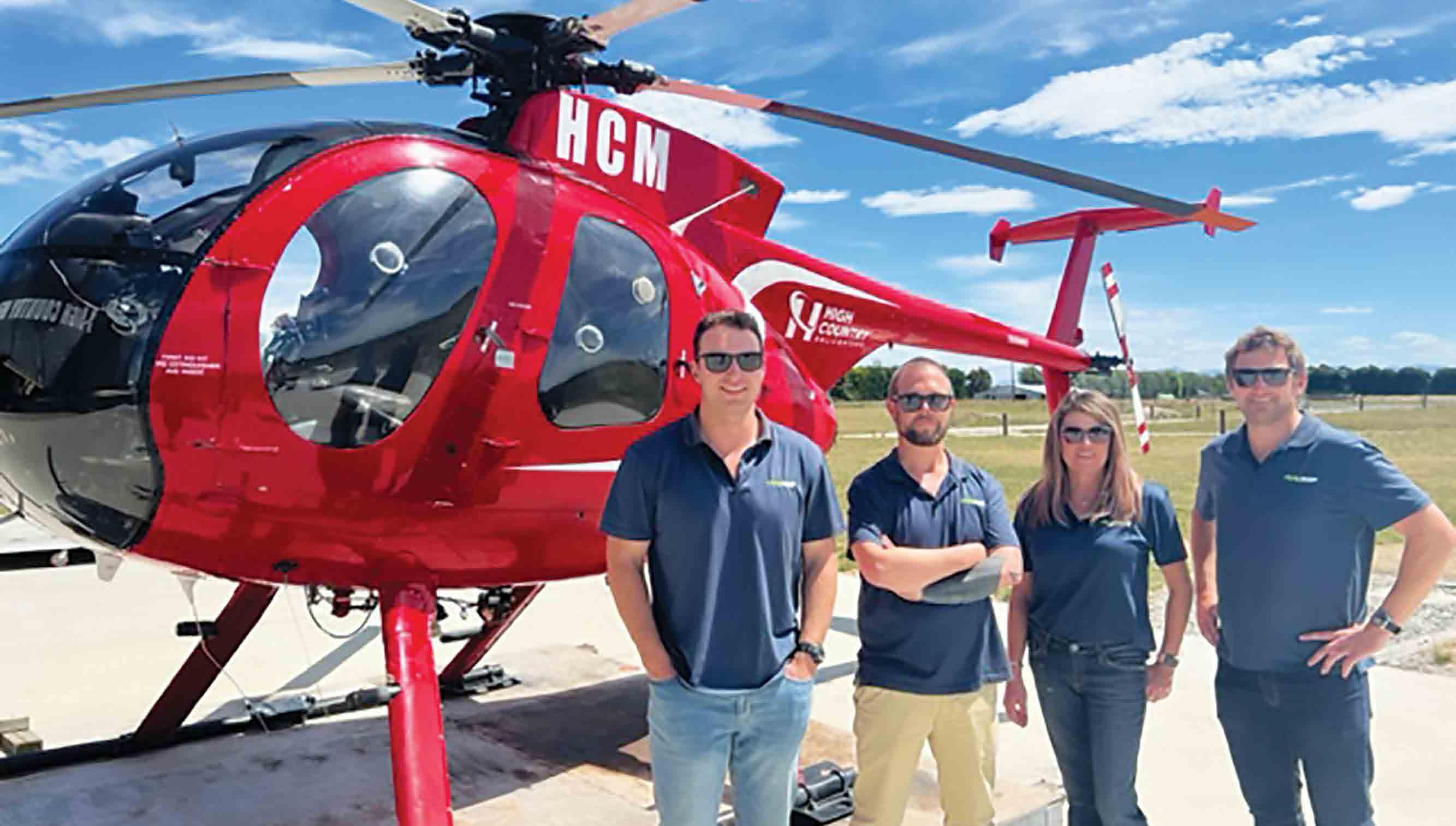
Twain currently serves on the Precision / Safety and FAR Committees for the NAAA and the Safety Working Group
for HAI. She is strongly interested in using agricultural technology to improve efficiency, safety and environmental outcomes.
“Our family has always liked to stay abreast of the latest technology. My grandfather tried out the first hillside combine and back in the 80’s was the first in our area to pull a bankout wagon with a Caterpillar Challenger rubber track - which I was lucky enough to operate,” said Twain. “I’m really excited about the benefits TracMap can provide farmers and contractors and look forward to meeting current and potential customers.”
Twain will be working with the TracMap team to increase sales on the West Coast and attending tradeshows throughout the USA.





Bridger Aerospace Group Holdings, Inc. one of the nation’s largest aerial firefighting companies, today announced that it has taken delivery of its sixth CL-415EAF “Super Scooper” from De Havilland Aircraft of Canada Limited.

“The delivery of our sixth Scooper will allow us to further expand our operations and allow greater deployment of the Bridger aircraft fleet across the U.S.,” commented Tim Sheehy, Bridger Aerospace’s Chief Executive Officer.
Join APSA this summer in Orlando for the premier public safety aviation training and networking event of the year! Whether you mange, fly or fix helicopters, fixed-wing or UAS for law enforcement, SAR, EMS, firefighting and/or natural resources missions, APSCON/ APSCON Unmanned is the place to be this July. We bring practitioners and subject matter experts together to share best practices, tactics, techniques, mission training, safety management, human factors and so much more with over 50 courses, classes and training sessions offered. Outside of the
classroom, the education and networking continues in the exhibit hall where you will experience the latest in public safety aviation aircraft, products and services while interacting with extremely knowledgeable exhibitor reps. And take time to recognize excellence in our profession and get inspired to be your best at our annual Awards Reception. Invest in yourself! Come network, learn, make new connections and renew old ones while soaking up knowledge and a bit of that famous Florida sunshine!

“In conjunction with our Air Attack and Unmanned Aerial Systems (UAS) fleet, we believe that we are one of the most full-spectrum aerial fire service providers in North America with a fleet of over 20 aircraft.”

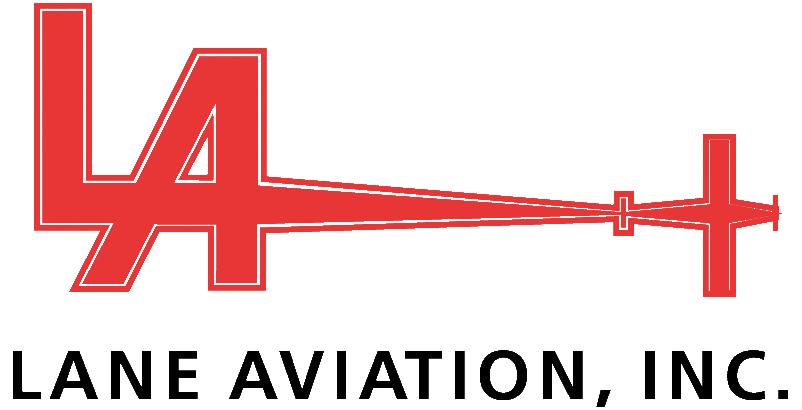
The Super Scooper is an amphibious aircraft that skims the surface of a body of water to scoop water into onboard tanks to drop on a fire. The purposeful design of the Super Scooper allows for an aggressive low-altitude flight profile, which enables pilots to deliver their drops with more precision, hitting the fire harder and extinguishing it faster. Super Scoopers can scoop up to 1,412 gallons of water in approximately 10 seconds, and with 90% of wildfires within 20 miles of a major water source, Super Scoopers provide an extremely effective tool to economically and expeditiously deliver water to a fire without having to return to an airport to refill the water tanks.
“By adding to what was already the nation’s largest fleet of Super Scoopers, we hope to ensure their availability to our federal and state government customers to help combat the growing threat of wildfires,” added Sheehy.


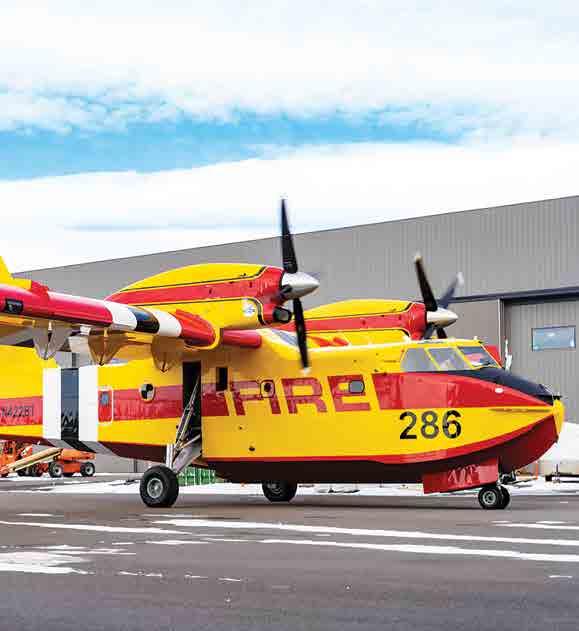
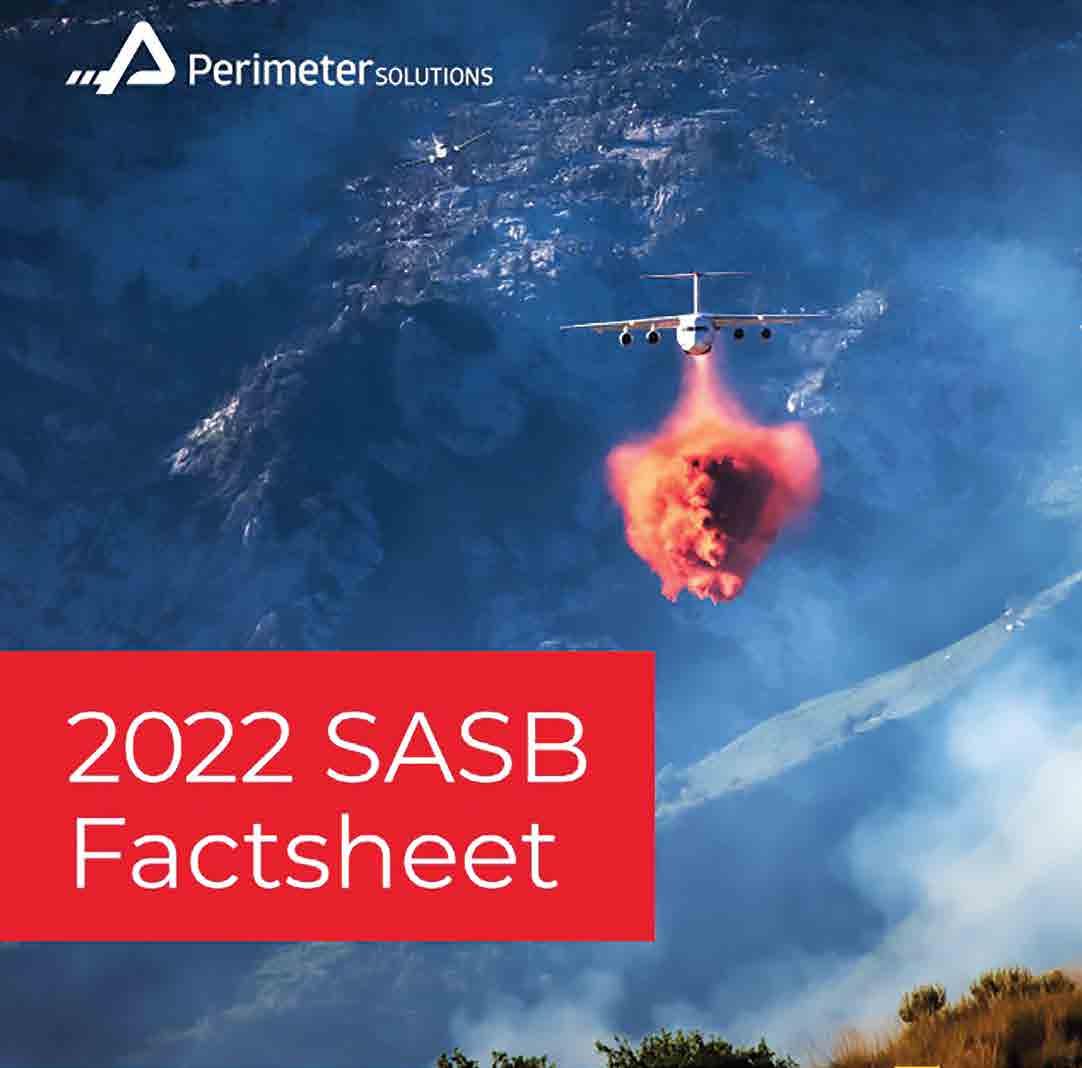
Perimeter Solutions announced February 1, 2023, that the company has issued its inaugural Sustainability Accounting Standards Board (SASB) Standard Factsheet. The newly announced report provides insight into Perimeter Solutions’ multi-faceted approach to enhance, advance and regularly communicate its sustainability strategy and environmental, social and governance (ESG) performance. It is available to view online.
“Perimeter Solutions is an innovative and evolving organization. In order to remain successful, we realize the importance of embedding strong sustainability priorities within our business operations,” says Edward Goldberg, CEO of Perimeter Solutions. “Over the past two years, our senior management team has worked to enhance our ESG strategy to align with the broader transformation of our company. Publishing this Factsheet demonstrates our commitment to transparency and accountability in our environmental, social, and governance performance.”
Highlighted in the report are the three key tenets of Perimeter Solutions’ ESG strategy, which guide the company's sustainability efforts:
Environmental: Perimeter Solutions’ focus on environmental stewardship is integral to the work it does every day. Wildfire control products developed by Perimeter Solutions save tens of thousands of hectares of forest every year, helping these forests to continue to sequester carbon and reduce the amount of greenhouse gases released into the atmosphere. Perimeter Solutions fire safety products also require dramatically less water to be effective, reducing the amount of water customers use while protecting a valuable natural resource. Internally, Perimeter Solutions has taken steps to increase recycling, made capital investments to reduce the amount of energy used in its manufacturing process, and increased the use of e-records to reduce the Company’s carbon footprint.
Social Impact: Perimeter Solutions is committed to providing equal employment opportunities. All recruiting, payment, performance, and promotion decisions are based on merit,
without discrimination on the basis of gender, sexual orientation, age, family status, ethnic origin, nationality, disability, or religious belief. Women represent approximately 19% of Perimeter Solutions’ total workforce. Members with diverse backgrounds comprise 33% of the Company’s Board. At the community level, Perimeter Solutions devoted 500,000 hours of dedicated service to forest fire remediation. The Company focused on contributing to the creation of a better world through its strategic nonprofit partnerships, volunteerism, and philanthropy.
Corporate Governance: Perimeter Solutions emphasizes a culture of accountability and conducts its business in a manner that is fair, ethical, and responsible to earn the trust of its stakeholders. Perimeter Solutions has corporate governance policies and structures in place to support its culture of accountability and transparency. The Company continues to focus on diversity and independence at the Board level and its current Board includes a majority of independent directors.
• USDA Forest Service certified
Working with global fire safety agencies and alongside frontline firefighters we’re always looking to make our aerial fire retardants better. More effective. Safer. Easier deployment. Higher visibility. Hassle-free mixing and storage.
In the critical area of environmental performance, our PHOS-CHEK LCE20-Fx fire retardant represents a next generation technology –featuring lower aquatic toxicity, low impact on vegetation and high efficiency in use. Beyond taking care of our natural environment, that makes PHOS-CHEK LCE20-Fx safer to use, easier to handle and reduces disposal costs.


Let us know how we can help you with better products and services. We’re listening.
• 100% premium-grade phosphate product
• Superior aerial visibility
• Low environmental footprint


• Improved aquatic toxicity
• Improved product stability
• Easier handling
• Reduced maintenance costs
• Enhanced product safety
Pratt & Whitney Canada (P&WC) announced February 23, 2023 that the company has achieved one billion flying hours since the formation of the company nearly 100 years ago, in 1928. P&WC engines power missions across a diverse portfolio – including Business Aviation, General Aviation, Regional Aviation, Helicopter Aviation and Auxiliary Power Units. Over this time, more than 110,000 engines have been produced, with over 66,000 currently in service powering our 16,000+ customers.
“Aviation has the power to change the world. Our engines power aircraft that benefit millions of people every day,” said Maria Della Posta, President, Pratt & Whitney Canada. “Every second, a P&WC-powered aircraft takes off or lands somewhere on the planet, whether they’re driving commerce, reuniting families, or powering humanitarian missions, emergency medical services, or search and rescue missions. Achieving one billion flying hours is made possible by the dedicated team at Pratt & Whitney Canada along with our customers, suppliers and the extended P&WC community. We look forward to celebrating this achievement with them this year.”
The PT6 engine family – the most prevalent and versatile in aviation – is celebrating 60 years of excellence and innovation. It has been embraced by fixed-wing and helicopter airframers around the world. With more than 64,000 PT6 engines produced since its introduction in
1963, it powers over 155 different aviation applications. The PT6 is unmatched in engine performance, reliability and dispatch availability, having reached 500,000 million flying hours.
“Our PT6 engine remains at the forefront of the aviation landscape, bringing breakthrough achievements in performance, control systems and data intelligence,” added Della Posta. “Today's PT6 is up to four times more powerful, has a 50 percent better power-to-weight ratio and up to 20 percent better specific fuel consumption compared to the original engine. Each new model is developed and designed with a specific mission, platform and customer in mind, while pursuing a reduced environmental footprint.”
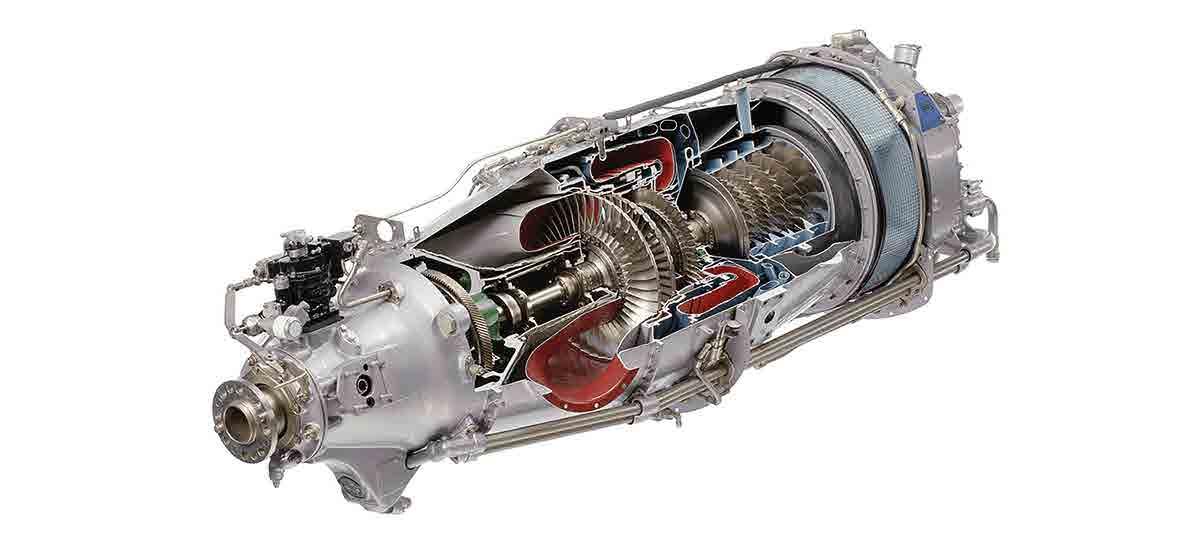
The PT6 engine’s relentless technological evolution has never been more apparent than in recent years. The latest engine family, the PT6 E-Series™, is the first with a dualchannel integrated electronic propeller and engine control system in general aviation.
The PT6 is also the only turboprop engine in the world to be approved for single-engine instrument flight rules (SEIFR) in commercial passenger flights in Europe, North America, New Zealand and Australia.
Building upon its innovative spirit, Pratt & Whitney Canada is committed to ensuring that the PT6 remains the engine of choice for its customers and the industry well into the future.
Let’s face it. This job’s not for everyone. Aerial firefighting demands nerves of steel and the power to fly at peak performance. The PT6 turboprop continues to be the engine of choice — built for full-load takeoffs in extreme hot and high environments, all day, every day.
LEARN MORE AT PWC.CA/PT6

GPMS International announced February 7th, 2023, that the company has received an FAA Supplemental Type Certificate (STC) for their Health and Usage Monitoring System (HUMS) known as Foresight MX for the UH-60A Black Hawk platform. The company worked closely with PJ Helicopters during the STC process, where they will benefit from becoming the first Black Hawk operator to utilize Foresight MX’s advanced capabilities.
Todd Powers, GPMS VP of Sales, explains that this is a significant certification for GPMS as it continues to expand its coverage and capabilities to new platforms. “Platforms like the UH-60 have a long and storied career in transporting troops and equipment around the world,” he said. “Typically, the older variants either weren’t equipped with HUMS or had equipment that weighed over a hundred pounds. Our co-founder and 2023 Helicopter Association International's Salute to Excellence Safety Award winner, Dr. Eric Bechhoefer, helped designed some of these original systems, which have proven to be very successful. In fact, the US Army recently reported that it avoided $215 million in UH-60 costs over a six-year period because of HUMS.”
Powers continues, “However, military aircraft are typically stripped of accessories through divestiture because of ITAR, obsolescence, and weight concerns. With Dr. Bechhoefer’s leadership and with the help of the team at PJ Helicopters, UH-60 operators now have an STC’d, next-generation, predictive HUMS, Flight Data Monitoring (FDM) and
optimized Rotor Track & Balance (RTB) solution – at an installed weight of under 17 lbs. and at a third of the cost.”
PJ Helicopters’ Director of Operations, David McCammon, “Lives and homes are at stake during fire season and our customers, friends, and family depend on us. Our 11 UH60As are extremely capable machines, and their ability to assist in controlling fires is only limited by their availability. With Foresight MX, we have a HUMS solution that meets MATOC requirements, lowers our DOCs, and will help keep these aircraft in the air.”

McCammon explains that one of the most challenging parts of managing a large mixed fleet, including divested military aircraft, is acquiring the replacement parts. “Supply chain issues can be very challenging, so gaining the capability to understand the true condition and health of our components is vital. Foresight MX provides us that visibility, with the bonus of having predictive remaining useful life for our components. With Foresight, we can better forecast our inventory needs, align maintenance planning, and reduce unscheduled maintenance and AOG events.”
McCammon went on to say that his team is excited about the multi-model and multi-OEM capability Foresight MX brings. “We have seven different models across four different OEMs. Traditional OEM-based HUMS solutions would only allow us to see a portion of our fleet at a time. Now, I can see the health of our Foresight-equipped fleet anywhere, anytime, and even on my phone.”


In 2022, three Uruguayan ag aviation companies started a project to provide aerial firefighting services in the country. With the support of new technologies, some of Uruguay’s most traditional companies in the aerial application industry (Charles Chalkling, Bueno Servicios Aereos and 20 Léguas) are making room for this new industry. After several months in contact with Zanoni Equipamentos, pilot Marcelo Oliver acquired the first hydraulic gate in the country together with his friend Juan Chalkling, who also owns an aeronautical workshop. In addition to installing the equipment on their aircraft, the maintenance center also equipped an Air Tractor from Pablo Bueno.
The development of the aerial firefighting market in Uruguay was due to demand from the agricultural industry, in a very similar way to what happens in Brazil: “the interest in fires arose from the need to put out fires in the field, for our customer’s farmers in years of extreme drought,” says Bueno. Based on these initial observations, the National Association of Private Aeroagricultural Companies started to help popularize the service: “The dissemination of the activity was driven mainly by ANEPA as a solution to a social problem. Subsequently, similar initiatives were carried out together with forestry companies so that they have a guard and protection service”.
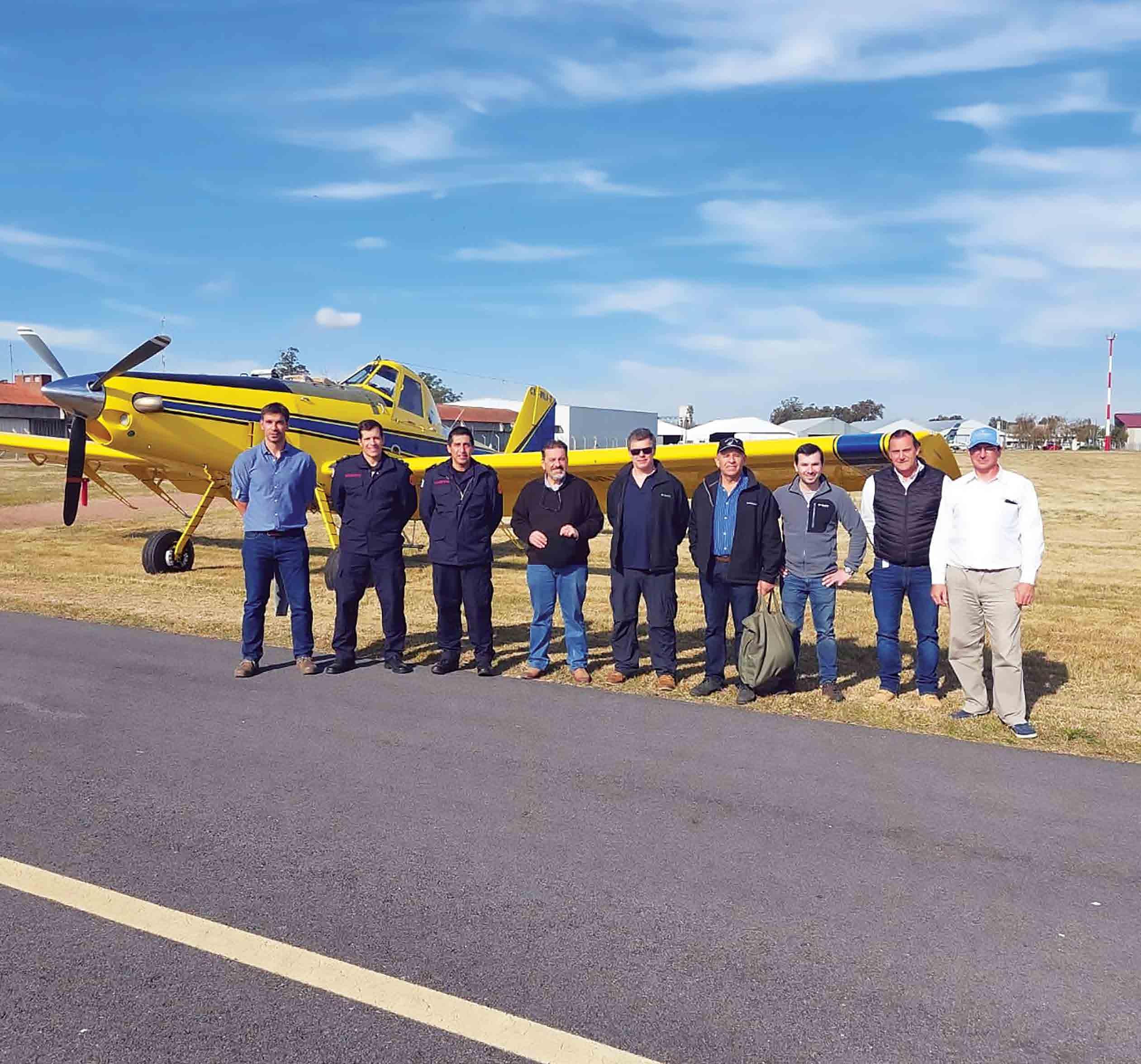
The strengthening of aerial firefighting by agricultural aviation companies goes hand in hand with its professionalization and, just as it has been happening in Brazil, the ag aviation industry in Uruguay has realized the importance of training and qualifications to guarantee a solid growth of the aerial firefighting market. Bueno recounts the company’s trajectory to start providing this type of service: “we invested in training and obtaining qualifications in aerial fire fighting for our pilots and for our company in general, in addition to acquiring new water reservoirs and the acquisition of a Zanoni fire gate.”
The partnership between the Brazilian technology developer and the Uruguayan aerial application companies contributed not only to Uruguay, but also helped to generate innovations that now contribute to the Brazilian market. Due to some specific demands from Uruguay, Zanoni Equipamentos perfected the equipment needed to prepare agricultural aircraft for firefighting. After a long period of conversations with the company 20 Léguas, a mechanism was created to provide further precision and versatility to the hydraulic gate. Marcelo Oliver told us where this need came from: “Here in Uruguay, the fire season often coincides with the agricultural season, requiring the aircraft to act both in aerial firefighting and in the application of products in the field. As we do solids spreading work (especially seeding), we needed a more precise adjustment in the opening of the equipment. This improvement they made for agricultural work also ended up helping with firefighting, allowing you to choose between a launch for a direct attack (salvo dump) or a firebreak (longer and less concentrated)”.

As in Brazil and in contrast to the northern hemisphere countries, the Uruguayan aerial firefighting market has developed in isolation from government actions. Companies and entities (forestry, sugar and alcohol companies or associations of grain farmers) have organized themselves to protect their properties without depending on the State. This new service is agreed upon by days on duty and hours flown, with a minimum of days and hours per year. In most cases, the aircraft is always ready to spray or spread products or fight fires. With similar realities among neighboring countries, the Mercosur ag aviation industry increasingly contributes to promoting sustainability and protecting the environment.

 Story by Officer Candidate Deirdre Salvas
Story by Officer Candidate Deirdre Salvas
Aircrews operating two UH-60 Black Hawk helicopters from 1-126th Aviation Regiment, Rhode Island Army National Guard provided aerial firefighting support to the large-scale brush fires at the Big River Management Area in West Greenwich and in Exeter, Rhode Island, April 12 and 14, 2023.
This is the first-time aviation support has been requested to respond to a wildfire, this specific incident burning over a thousand acres before being contained.

“In September 2022, aviation received three Bambi Buckets as part of the National Guard Bureau's initiative to expand aerial firefighting capability nationally,” said Col. John MacDonald, the State Army Aviation Officer for the RI Army National Guard. “Following receipt of the buckets, the aircrews trained on the operational and technical aspects of the bucket, power management, its limitations with the helicopter, and the employment of the bucket with a fire.”
“They also received training from the Rhode Island Department of Environment Management on the anatomy of wildfire and wildland firefighting that was tailored to using the new Bambi Bucket capability,” said MacDonald. “This experience established best practices, standardized terminology, and rehearsed aerial firefighting techniques between RING and DEM.”
“Nearly a month later, those aircrews were called to support the brush fires in West Greenwich and Exeter,” said MacDonald “and they’re now operating as a fire bucket team in one of the largest wildfires in Rhode Island's history.”

“The success of the aircraft would not be possible without the previous training events with DEM Forestry.”
These specialized buckets hold 660 gallons of water and dropped nearly 50,000 gallons of water over two days during flights completed by National Guard aircraft.
“While a majority of training as military pilots focuses on tactics in combat environments, the most fulfilling part is when we’re able to apply our training to help those in the communities we’re part of,” said Chief Warrant Officer 3 Matthew Ryan, an instructor pilot from the 1-126th Aviation Regiment, when asked about the role aviation plays in helping his community.
The Rhode Island National Guard's 1st Battalion, 126th Aviation Regiment, General Support Aviation Battalion (GSAB), is headquartered in North Kingstown, Rhode Island at the Quonset National Guard Base. The 1-126th provides command and control, air movement of troops and material, and aeromedical evacuation to battlefield commanders. Additionally, they provide search and rescue, evacuation, and air movement capabilities to Rhode Island during state emergencies.
Aircraft manufacturer Daher announced March 2, 2023 that the company has become the first manufacturer to join as an industry member of the United Aerial Firefighters Association (UAFA), underscoring its support for the newly-formed advocacy group as a voice for this specialized community – which utilizes the company’s Kodiak aircraft to support wilderness fire suppression missions.
“The UAFA’s goals are fully aligned with those of Daher: enhancing the safety, operability, and effectiveness of aircraft, especially in such challenging and unforgiving missions as combatting wildfires,” explained Paul Carelli, the Director of Kodiak Flight Operations and Special Missions. “We intend to be an active UAFA member, bringing our expertise as a multi-role aircraft manufacturer while also benefitting from the feedback of those who are on the front lines of aerial firefighting.”
Kodiak aircraft have demonstrated their capabilities in fire suppression duties, with primary missions including spotting for firefighting crews and directing aerial tanker drops. The Kodiak is ideally suited for the “air attack” function, as it can guide air tankers with verbal target descriptions and by physically leading them on the drop runs. With the single-engine turboprop-powered Kodiak’s excellent short takeoff and landing characteristics, it can deliver crews and supplies to length-limited and narrow backcountry strips.
One of the UAFA’s founding members is Bridger Aerospace Group, LLC, which operates Kodiak 100s in its aircraft fleet as one of the United States’ largest aerial firefighting companies. “We appreciate Daher’s proactivity in joining UAFA and look forward to benefitting from its aircraft manufacturer’s perspective as the association develops a strong and coordinated voice for the entire aerial firefighting community,” said Tim Sheehy, the CEO of Bridger Aerospace and UAFA Board member.
Daher produces the Kodiak in two versions. The 8-10-seat Kodiak 100 Series III is capable of operating on uneven and unimproved runways or on the water in the amphibious version, equipped with Garmin’s G1000 NXi avionics. The larger Kodiak 900 was introduced in 2022, featuring a fuselage length extension of 3.9 feet for more passenger room and cargo space, a cruise speed increase to 210 KTAS, and a greater useful load while offering a maximum range of 1,129 nm.
To date, more than 320 Kodiaks have been delivered to customers and operators around the world. In addition to the Kodiak’s support role in aerial firefighting, special mission applications for the aircraft include Intelligence, Surveillance, Reconnaissance (ISR); aerial mapping; air ambulance transportation; parachute operations; resource analysis; wildlife management/anti-poaching; disaster/humanitarian relief; and training. Throughout the United States, several state and federal agencies, in addition to private contractors, operate Kodiaks in support of wildland fire missions.

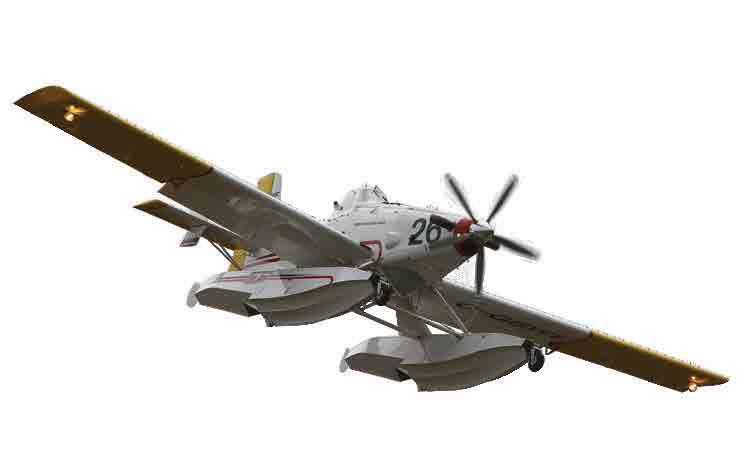

The United States Helicopter Safety Team (USHST) named Chris Baur, President and CEO of Hughes Aerospace, as its new industry chair on March 1st, 2023. Baur will succeed Nick Mayhew, who has served as the Industry Chair since January 2020.

Baur brings over 40 years of diverse aerospace industry leadership, global business development, and technical innovation expertise to the USHST. As founder of Hughes Aerospace, one of the largest Air Navigation Services Providers (ANSP), Chris has been a pioneer in NextGen and the Global Performance Based Navigation PBN movement. In this capacity, he has been a contributing member of the USHST Infrastructure Working Group. Chris continues to operate helicopters in addition to flying as a senior captain with a major Air Carrier. He is a dual-rated ATP/CFII with over 15,000 hours, having served as a military/aviator in eight different fixed and rotary-wing aircraft in the US Army, US Air Force, and US Coast Guard. He is recognized as a Fellow of the Royal Aeronautical Society (FRAeS) and holds a BS from Embry Riddle and an MBA from Brown University.
Despite Baur’s extensive commitments to the aviation industry, he is eager to accept his new role. “I am deeply honored to accept the challenges of this position. “Following Nick into this role is no easy task as his leadership and technical prowess elevates the USHST bar to incredible OGE heights!” said Chris Baur. I look forward to listening and gaining insights from my fellow team members as well as the community to advance the USHST’s influence and relevance for the advancement of safety in our constantly evolving industry.” Chris will have his work cut out for him on day one, as the USHST has already identified five new Helicopter Safety Enhancements (H-SEs) to pursue once committed working groups are formed.
“I welcome Chris and look forward to working with him as we find innovative ways to connect with our industry and address our biggest challenge – driving down fatal civil rotorcraft accident rates,” said Wayne Fry (USHST Co-Chair, FAA AFG-300). Through Nick’s steadfast leadership, our team has enjoyed historic levels of productivity and project success.” Mayhew helped guide the successful conclusion all but one of the team’s original 16 H-SEs.
The USHST reviewed several highly qualified applicants after announcing the co-chair vacancy in November 2022. Chris Baur assumed his new role during the USHST All Hands meeting at HAI HELI-EXPO Monday, 6 March 2023 in Atlanta, Georgia.
As a regional partner with the worldwide Vertical Aviation Safety Team (VAST), the USHST was formed in 2013 to lead a government and industry cooperative effort to promote safety and work to reduce civil helicopter fatal accidents.



Columbia Helicopters announced on February 23, 2023, that the company sold and delivered a Columbia Model 107II to Daejin Air of South Korea, making Daejin Air Columbia’s launch customer for the aircraft in Asia. As a part of the sale, Columbia Helicopters also provided OEM aircrew and maintenance training for Daejin Air’s pilots and mechanics at Columbia’s facility in Oregon.
The aircraft will be used primarily for firefighting, both during the day and at night, with NVG operations. It will also provide heavy-lift and powerline construction support throughout South Korea and Southeast Asia. Daejin Air was founded in 2004, and in 2015 the company received its first approval for night firefighting operations, which it continues to maintain while working to further develop the aviation industry in South Korea.

“We are very pleased with the lifting power and stability of the Columbia Model 107-II helicopter, and with the superior
support we have received from Columbia,” says Kyung Hwan Jung, President and Owner of Daejin Air. “With the Model 107-II in our fleet, we are increasing our aerial firefighting capabilities, in addition to growing our heavy-lift construction opportunities.”
With full OEM support, the standard category Columbia Model 107-II features a 22,000-lb (9,979-kg) lifting capacity, internal and external cargo lift options, and passenger-carrying capability.
“The Columbia Model 107-II is a cost-effective, highly reliable helicopter, and we are seeing considerable demand for the aircraft,” says Michael Tremlett, President and CEO of Columbia Helicopters, Inc. “With the delivery of this aircraft in Asia and the delivery of another 107-II to Europe later in the spring, our OEM business is steadily expanding the global footprint of Columbia aircraft worldwide.”


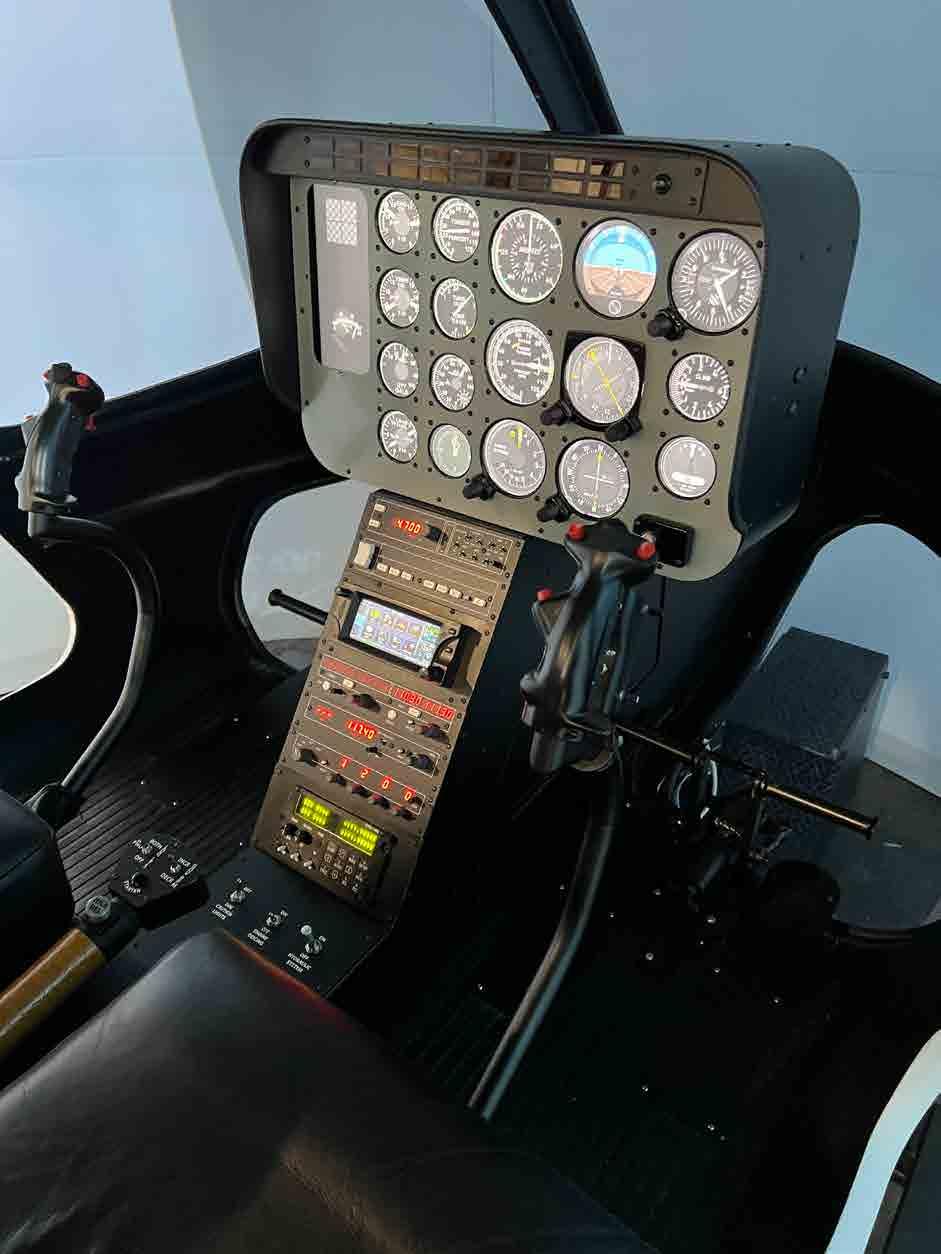


Billings Flying Service (BFS) has completed the purchase of six Netherlands Defense Ministry surplus Boeing CH-47D Chinook helicopters. The sale was approved by the Netherlands’ Defense Material Sales Committee at the end of 2022.
“We are pleased to confirm a contract for the purchase of six surplus Boeing CH-47D helicopters from the Netherlands Defense Ministry has been executed, with near-term plans to bring the aircraft stateside,” said BFS President, Nick Nenadovic. “The latest acquisition of heavy lift helicopters will allow our organization to grow on a global scale while concurrently supporting our North America-based partners.”
“With the additional aircraft, our team will be prepared for mobilization in support of fire suppression, aerial
heavy lift, and other significant projects around the world. These are very exciting times for the organization as a whole.”
The aircraft will be transported to Billings, Montana, to undergo an in-house reset and modification program to support the company’s heavy lift, aerial firefighting, and utility/infrastructure operations. Expected entry into service is late 2023 through 2024.

BFS’ latest acquisition will bring the fleet of CH-47 aircraft to a total of fourteen aircraft, making it the largest operator of the CH-47 in North America. The new aircraft will join the rest of the BFS fleet which includes a Black Hawk, a Bell 206, and a PC-12.

On December 5th, 2022, the fire aviation world changed, for good and for the better, when Fortress’ aerial retardants were fully approved and listed on the Forest Service’s Qualified Products List (QPL). After nearly a decade of intensive research and development, Fortress became the first new aerial long-term retardant provider to achieve fully qualified status in over 22 years.

This mountainous achievement ends the sole-source era of aerial firefighting, and definitively establishes Fortress’ innovative magnesium chloride technology as safe, effective, and fit to fly. Competition is back, and Fortress is just getting started


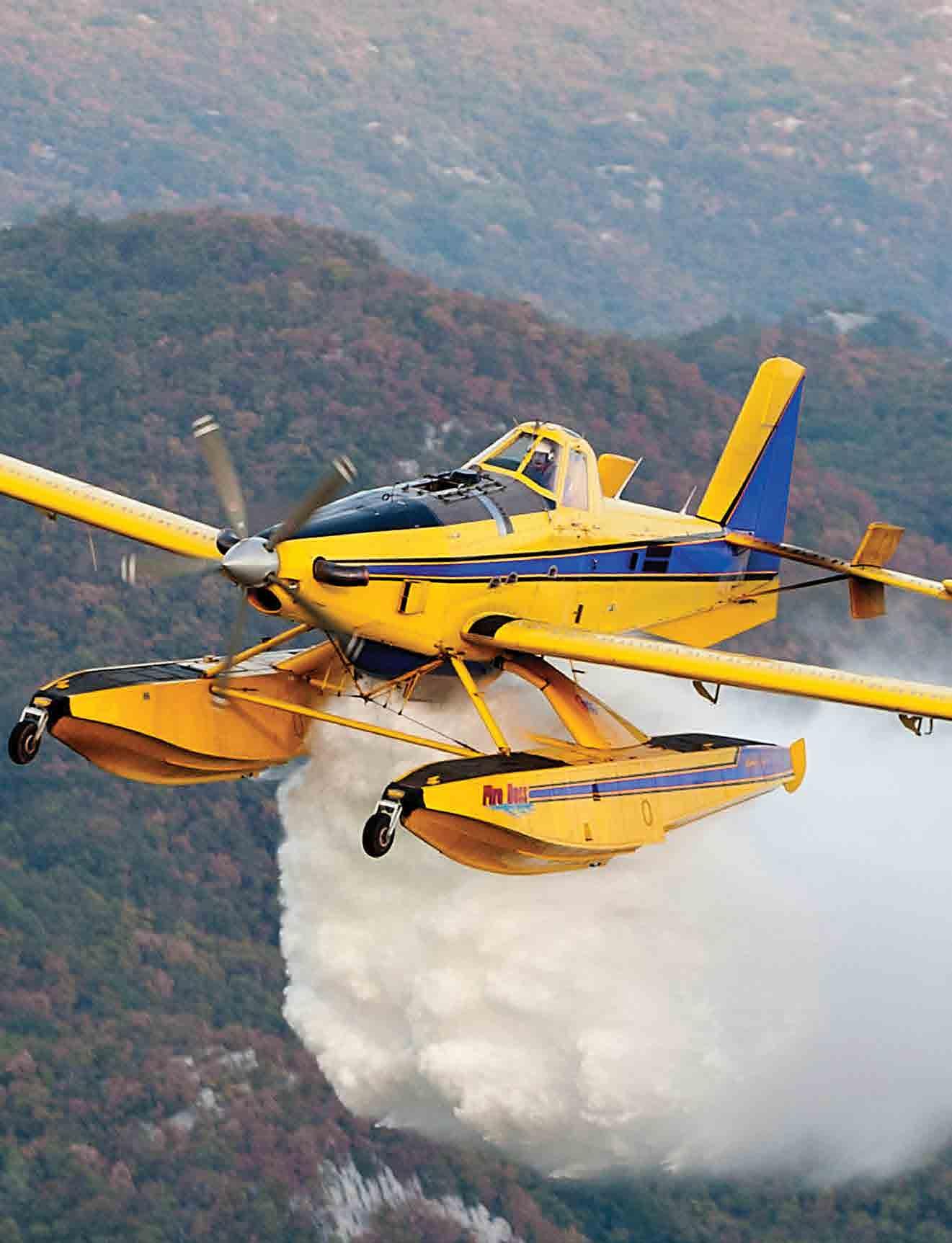
Visit FortressFRS.com to learn more.




Aviation Specialties Unlimited, Inc. (ASU) announced on March 1st, 2023, that they had hired Vicque Ebentheuer as the company's new marketing manager. Before joining ASU, Ebentheuer worked in marketing for more than 25 years in the healthcare industry.

“Vicque brings 25 years of marketing experience in a very customer-driven industry," said ASU President Dr. Joe Estrera. “Healthcare requires great attention to detail, customer service, and understanding your market. I am sure Vicque will bring those same skill sets to ASU to serve the Aviation industry.”
Although most of her career has been in healthcare, Ebentheuer is no stranger to aviation. Her father and son are both fixed-wing pilots. Her marketing skills include management of CRM systems, marketing research, data analysis, and strategic planning. She is also an adjunct faculty member for Boise State University and stays current on modern media planning, purchasing, marketing, and media placement. Ebentheuer graduated summa cum laude from Park University with a Bachelor of Arts degree.
“I am very excited to have the opportunity to be part of the ASU, Inc. team,” said Ebentheuer. “Being a native Idahoan, I have a passion for helping Idaho companies reach their full potential. ASU, Inc. has grown over the last 25 years to become one of the state’s largest international exporters. I look forward to helping this safety and customer-focused aerospace company continue bringing growth and innovation both locally and internationally.”


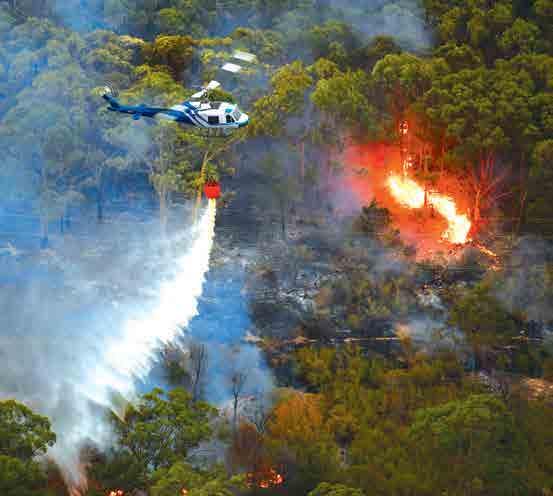


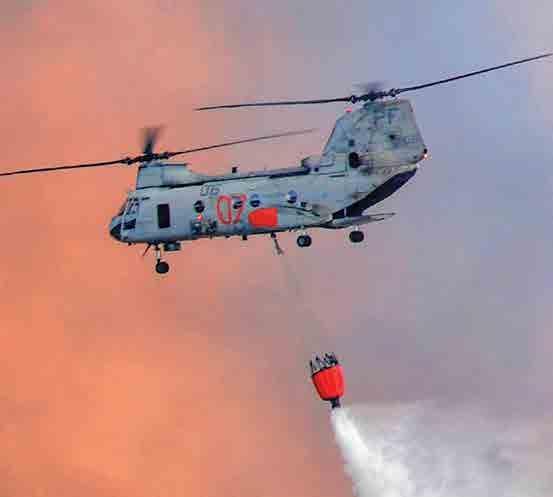

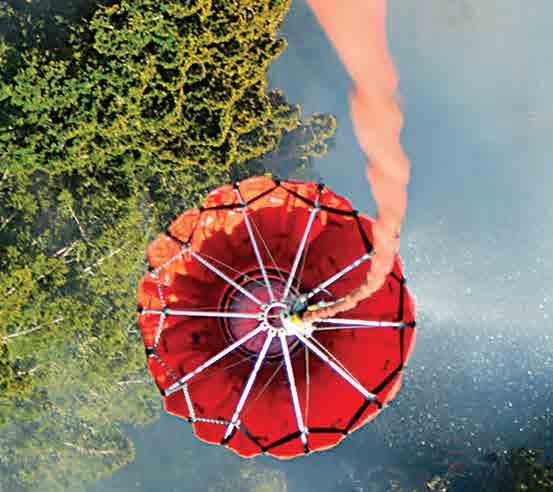
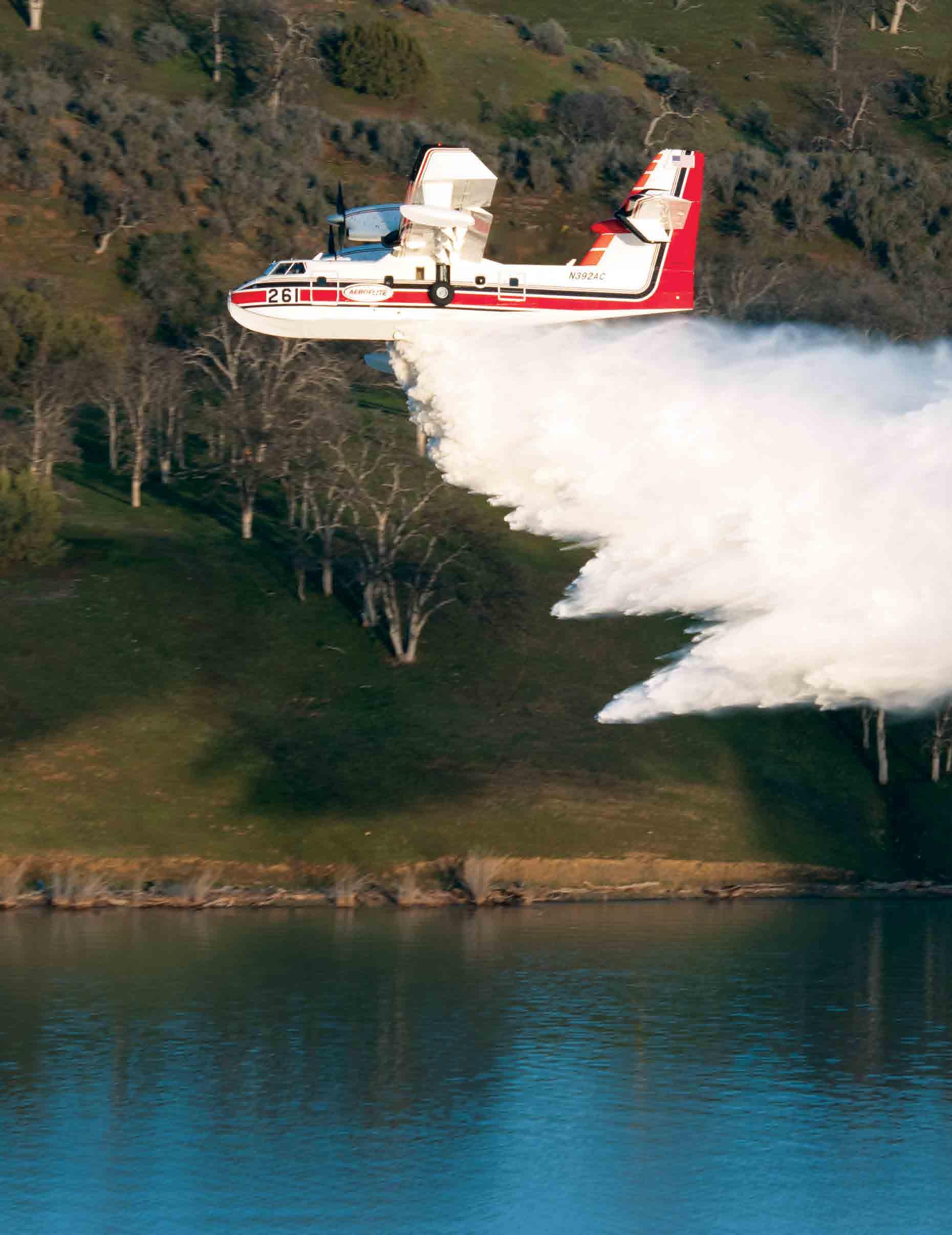
Aero-Flite, the U.S. subsidiary of Canadian-based Conair, has been working hard this year to onboard new pilots and continue to provide next-level training for their existing pilots.

AerialFire joined this year’s training in Chico, California, where the Aero-Flite team showed up in full force from their home hangars in Spokane, Washington. This is the third year providing their 57 pilots training over a three-week period at Northgate Aviation FBO in northern California. Three RJ85 airtankers and two CL-415
scoopers took part, along with the Dash 8-400AT (Q400AT), making its first training appearance.
In addition to the roughly one hundred team members who descended on Chico, consisting of pilots, maintenance personnel, and support staff, Aero-Flite also loaded in ten containers of equipment, spare parts, vehicles, and other required supplies, plus a mobile control center which acted as ground control and airborne dispatch for the participating fleet. ➤
Story and Images by Ryan MasonWith seven pilots currently training to fly the Q400AT, there is still no shortage of pilots for Aero-Flite’s two other airframes, with sixteen pilots presently flying the CL-415 super scooper and twenty-six pilots flying the RJ85. While it can be valuable to have cross-trained pilots, Aero-Flite tries to keep dual-trained pilots to a minimum, with only a few pilots qualified in two aircraft to minimize the workload on the pilot, maintaining proficiency in only a primary aircraft.
Pilots within Aero-Flite come from diverse backgrounds. Q400AT and RJ85 pilots are equally spread from the military, civilian airliner, and firefighting worlds. The CL-415, being an amphibious aircraft, requires a specific skill set

often found in pilots with bush plane experience or floatplane pilots who do passenger transport in remote locations. Niemann stated that it was desirable for new hires to have a multi-engine seaplane rating. However, that qualification has become harder to find and is not a prerequisite. CL-415 Chief Pilot Jason Robinson has backcountry Alaska flying experience and time spent flying Twin Otters in the Maldives.
The FAA STC was issued on the Q400AT in early April. Seven pilots are already qualified to fly the Q400AT, allowing for a rapid carding process and rollout to wildfire response across the U.S. for this coming fire season.
As the largest Honeywell TPE Channel Partner globally, TAE Aerospace can provide the lowest pricing on OEM parts for our customers.
Why TAE Aerospace is the largest authorized Honeywell MRO in world
• Unmatched pricing on OEM parts
• Largest OEM parts holding to assist with quicker turnaround times
• LRUs, component and fuel nozzle sales and support
• Consignment stock
• In-house repair capability
• Lease and exchange engines
• AOG support
• Global sales, field service and technical team ready to support your next engine or component event.
Other authorized MRO providers and non-authorized facilities are being forced to pass on the significant price increases we see in the economy today. As the only globally-licensed TPE MRO provider, TAE Aerospace can continue to deliver the lowest pricing to our customers. Our global capability also means you will benefit from our large stock holdings, in-house LRU capability and the only Honeywell Authorized Rental engine pool.
For example, the current Honeywell 1st stage wheel (P/N 3108164-4) list price is $174,831.* As a TAE Aerospace customer, you will pay $53,000. That’s a difference of almost $122,000!

Talk to us today about how we can offer a cost-effective solution for your next engine or component event. Contact Bruce Hubler on +1 (208) 229 8340 or email
bruce.hubler@taeaerospace.com

The company maintains a diverse fleet of three different aircraft, each having a specific, focused use within the aerial firefighting world. The new addition of the Q400AT brings to the fleet a slightly lower water/retardant capacity. Still, it makes up for it through improved maneuverability and operational cost savings compared to a larger jet-engined airtanker. “It’s a very stable platform. The Q400AT’s power gives us the ability to respond faster, from firing up the engines to taxiing out and taking off, with a quicker dispatch than the jet. So I would say that our response time is going to be drastically shorter,” said Brock Hindman, an Aero Flite Chief Pilot who recently transitioned from the RJ85 to the Q400AT.




In the RJ85, each pilot must do at least two water drops and two hours of tactical flight training during spring training in Chico each year. They also must complete their night currency in the company’s Part 142 flight simulator.
“On the first flight in Chico, we take pilots with a fully loaded airplane to a higher altitude and do maneuvers such as steep turns while loaded. We run through a stall series to show how the aircraft reacts at each flap setting. We transition from there into a maximum rate of decent down to the tactical area, and from that point, we delve into tactics,” said Hindman. ➤

For over 50 years Aero-Flite has partnered with agencies on forest fire missions across the US.

The Future of Aerial Firefighting: The Dash 8-400AT

Fast, fuel efficient and tactically flexible. Setting the standard for Next Generation aircraft with OEM support to keep the firefighter flying for decades.
aerofliteinc.com
 Photo: Alexandre Dubath
Photo: Alexandre Dubath




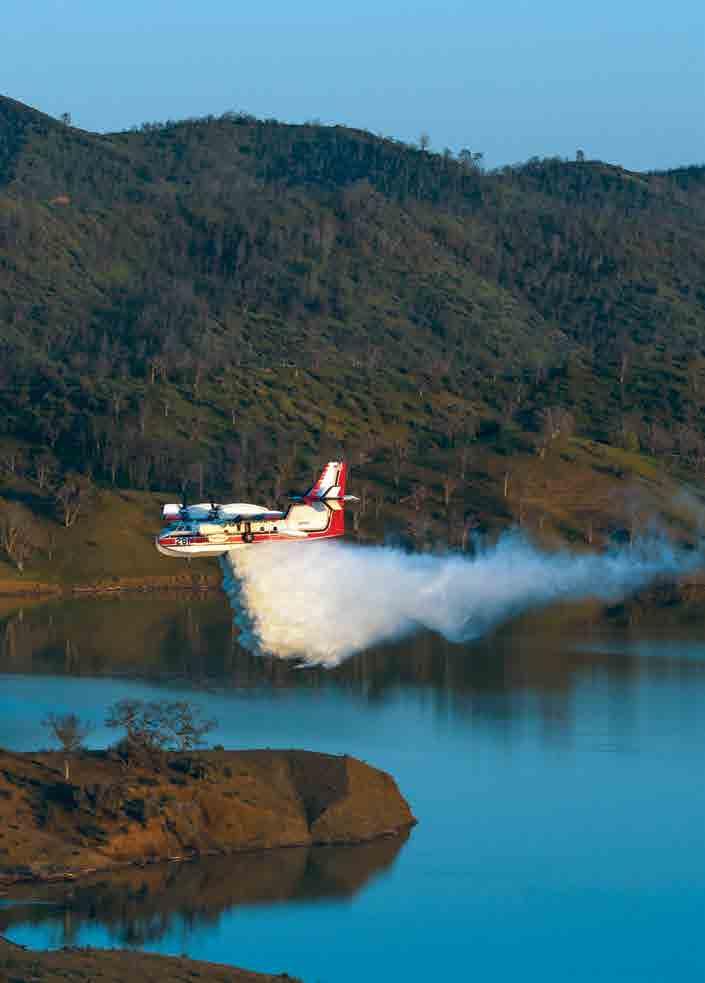

Aero-Flite’s General Manager Chris Niemann added that while core competencies are addressed through comprehensive training, the minimum requirements are far exceeded. Crews work through complex scenarios using virtual reality simulator training that enables each pilot to visualize the fire traffic area just as it would appear in the real-world environment. “It’s really a crawl, walk, run approach, where crews get classroom refreshers, then fly the simulator for at least three hours of procedural and
tactical training before completing a check ride. We then bring all crews down here to Chico and do the virtual reality training, which walks you through the fire traffic area tactics. The V.R. training is different than the simulator training because it is not procedural to the aircraft; it’s procedural for the fire traffic area. Crews then complete training with another two flights in the aircraft, operating in our simulated fire environment before being carded for the season,” said Niemann. ➤

Aero-Flite contracts with a 1500-acre property northwest of Chico to simulate a fire in a valley surrounded by complex terrain for training purposes. The drop location in this area is staffed by ground team members who set up a realistic drop zone, complete with simulated fire lines, dozer lines, and simulated smoke from smoke generators to add realism for pilots conducting water drops. In addition, ground crews are tasked with simulating air attack and ground crew communications.
In addition to using the area as a training ground, the same area is used by the RJ85 and CL-415 for carding runs with the United States Forest Service.

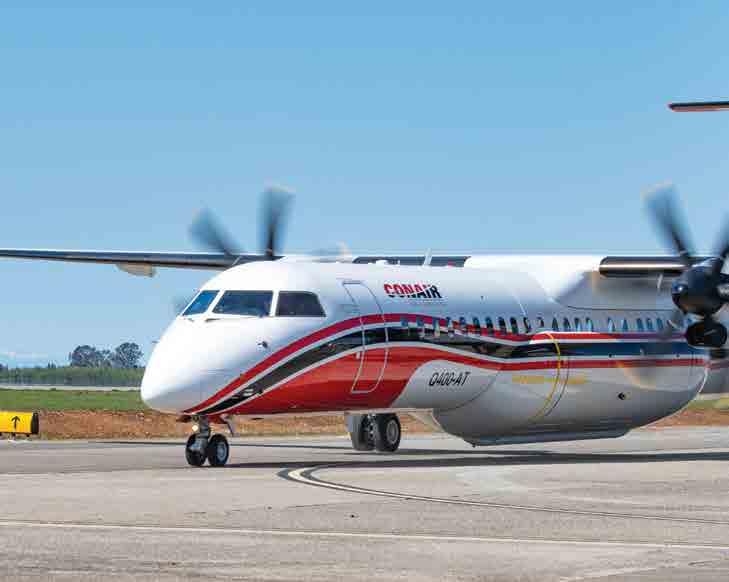
Jason Robinson has decades of experience in flying, not only in commercial aviation but in the fire environment. Those years of experience helped him and the team at Aero-Flite
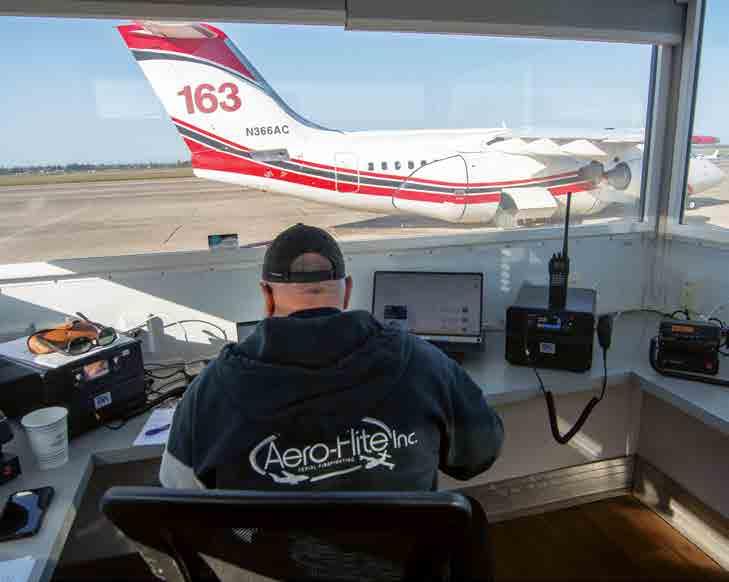
continually refine the training program, progressing from what was a standard training syllabus to what is now a robust training program which embraces the latest in technology. In addition to classroom learning, type training, and on-wing training, Aero-Flite provides immersive virtual training to pilots using advanced simulators, giving each pilot a solid foundation to continue building on their real-world experience.
Complimenting their vigorous safety program, the team at Aero-Flite reviews every real-world incident in the aerial firefighting world to ascertain if it is an incident that the company can learn from, adapting their training to circumvent any possible issues that could lead to a similar outcome. “We take lessons learned from all industry incidents and adapt them into our training program. For example, if there has been an industry incident of dropping too low, we spend time in our training addressing that topic,” said Robinson. ➤








In addition to flight training at Chico, an immersive virtual reality simulation setup was created at the offsite location. The simulator experience involved live communication with other aircraft in the fire traffic area, including a lead plane and helicopter. Pilots performed an entire flight with retardant or water drops and communications with air traffic control, incident controllers, and other aircraft. V.R. goggles simulated the cockpit, coupled with augmented reality, enabling pilots to see their own hands manipulate simulator controls.
This mobile simulator in Chico was complemented by the advanced simulator training available to Aero-Flite pilots at Conair’s Training + Tactics Centre in Canada, where they practice aerial firefighting maneuvers in the Level D RJ85 full motion simulator plus the newly expanded
Mission Training System, where pilots operate together in six integrated Flight Training Devices over a synthetic wildfire, with fire and smoke reacting to drops, wind, terrain, and fuel type, just like it would happen in real life.
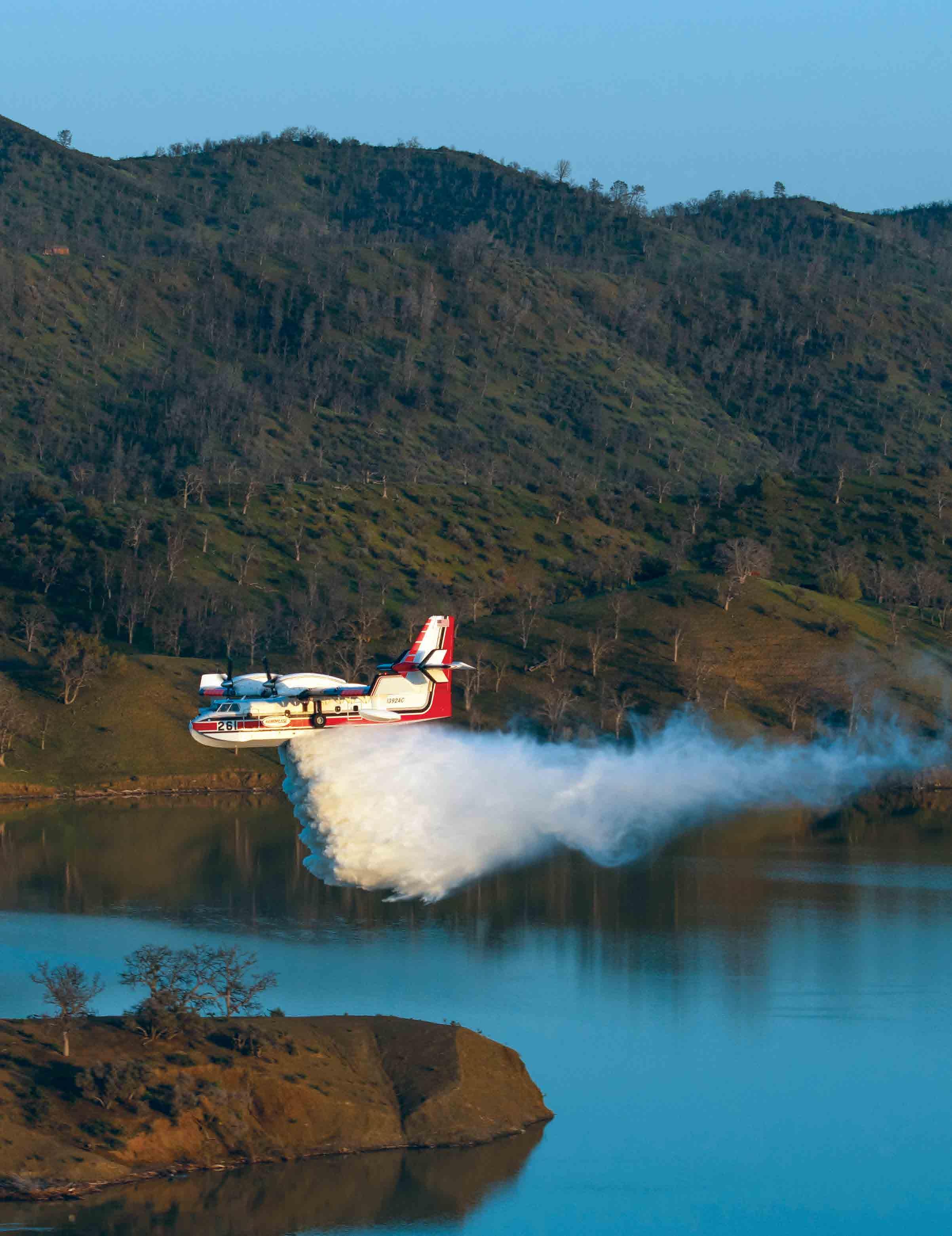
In addition to being committed to training advancements, Aero-Flite is about to break ground on a brand new 102,000-square-foot facility in Spokane that consists of 40,000 square feet of hangar space and customized spaces, from a machine shop to an engine shop. The new area will be a significant improvement for the Aero-Flite team, according to Chris Niemann, who states that the current facility was a World War II-era hangar, modified over the years to accommodate a growing fleet. The new facility will enable the arrival of additional Q400ATs, recently approved for their use in the United States as an aerial firefighter.
Aero-Flite had two CL-415 scoopers and three RJ-85 aircraft on hand during training which the majority of pilots were obtaining annual recurrent training and initial training.● APPROVED AROUND THE WORLD!
● PILOT IS ALWAYS IN CONTROL
● REDUCED PITCH - UP
● SIMPLE, USER FRIENDLY & RELIABLE



● SHAPE, SIZE AND DENSITY OF THE DROP PRODUCED TO MAXIMIZE FIRE CONTROL

● FULL SALVO DROP IN LESS THAN 2 SECONDS
● 4 LEVEL DUMP CONTROL
● APPROVED ALL MODEL OF AIR TRACTOR & THRUSH 660/710
● 20 YEARS PROVEN TRACK RECORD OF RELIABILITY & SAFETY

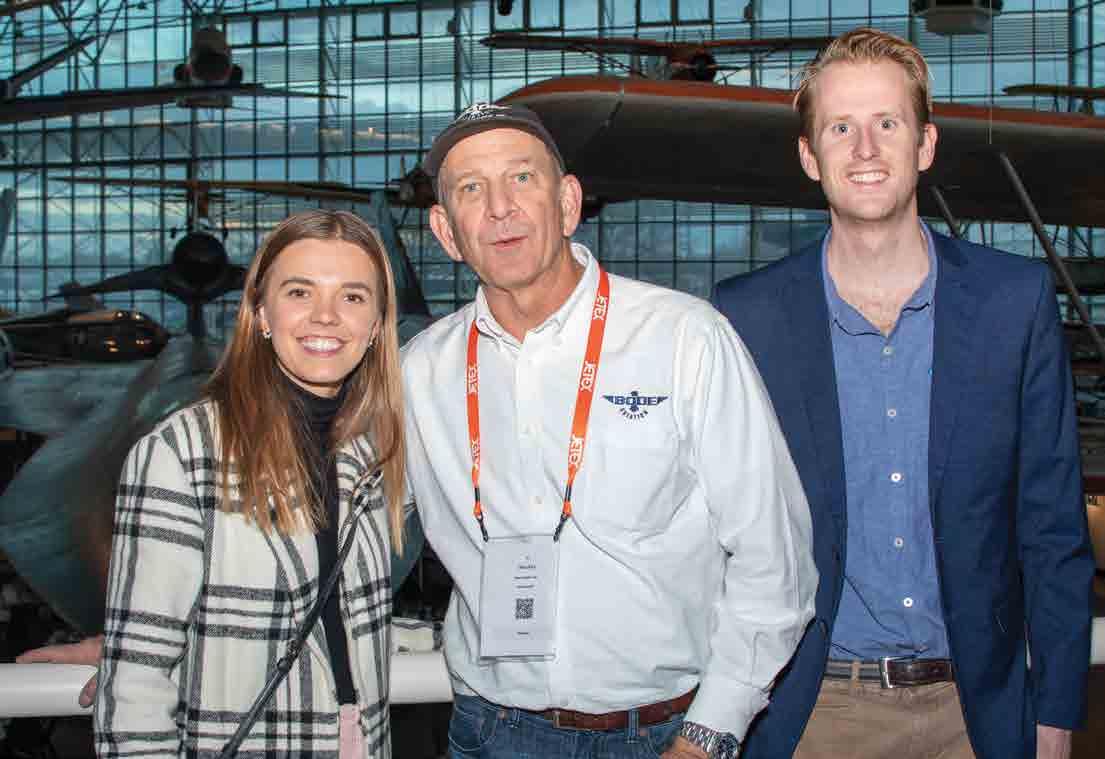


The aerial firefighting industry descended on the Pacific Northwest for this year’s installment of the Tangent Link-run Aerial Firefighting North American Conference held this year at the Hilton Airport Hotel and Convention Center in Seattle.

The show kicked off on Sunday evening, April 2nd, 2023, with the AerialFire Magazine sponsored drinks reception that facilitated attendees to reestablish relationships in a social setting before

the show’s opening address Monday morning headlined by Washington State Commissioner of Public Lands Hillary Franz, who opened the conference with a stirring call to action to the packed room of attendees detailing her own experiences with wildfire and her states battles with fighting fire on a large scale while describing some of the wins and losses for her state and how they have overcome some massive barriers to provide a more robust aerial firefighting strategy for their state. ➤
 The Aerial Firefighting Pacific Northwest event dinner sponsored by Bridger Aerospace was held at the internationally acclaimed Museum of Flight in Seattle.
The Aerial Firefighting Pacific Northwest event dinner sponsored by Bridger Aerospace was held at the internationally acclaimed Museum of Flight in Seattle.
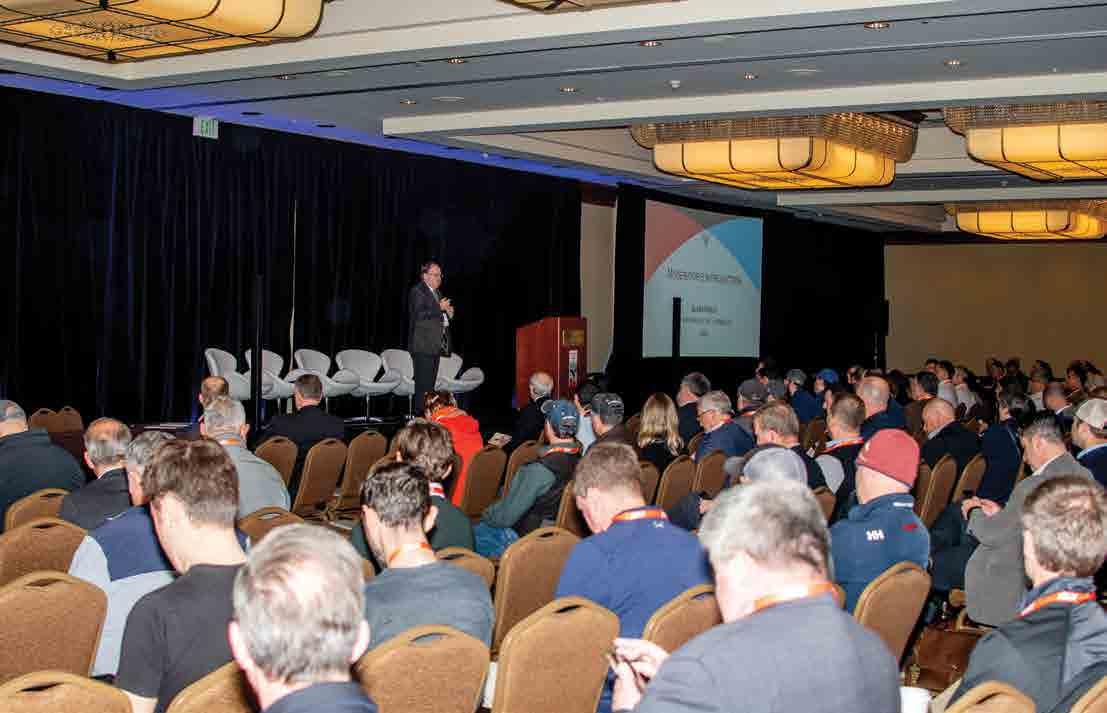





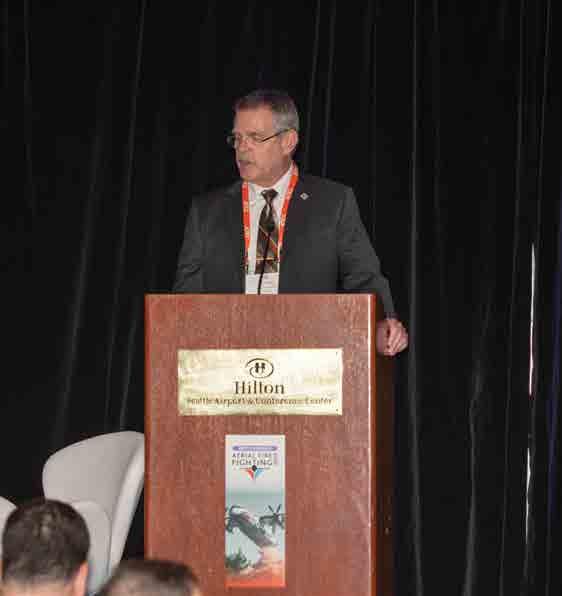

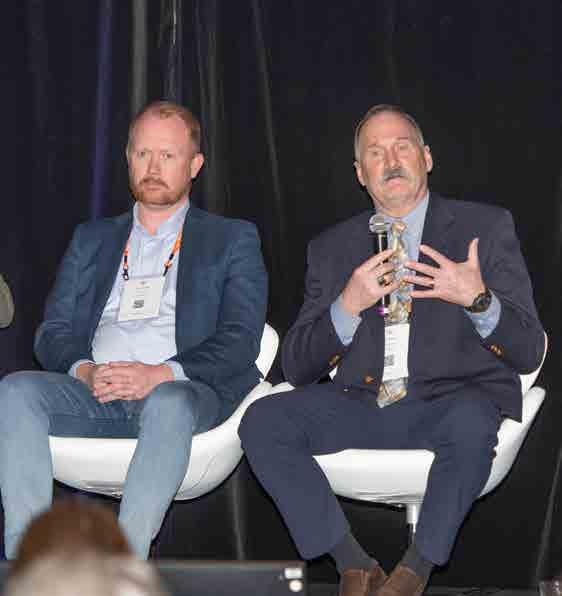




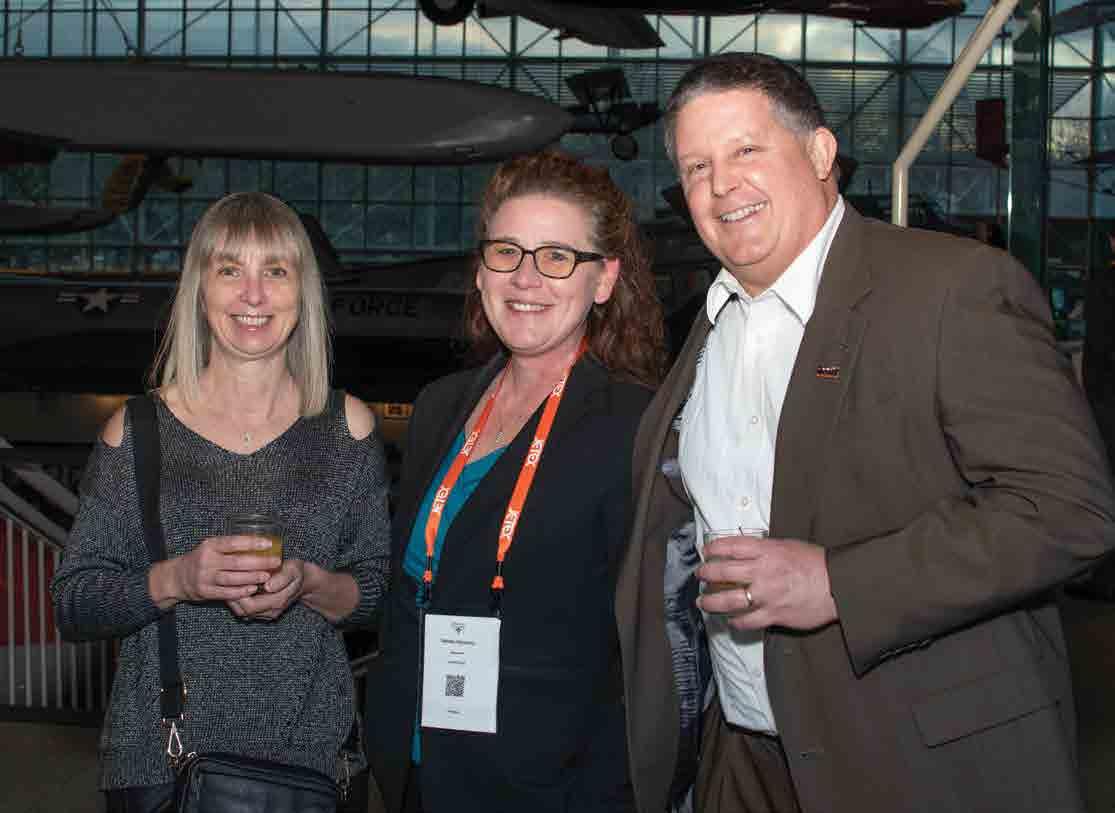
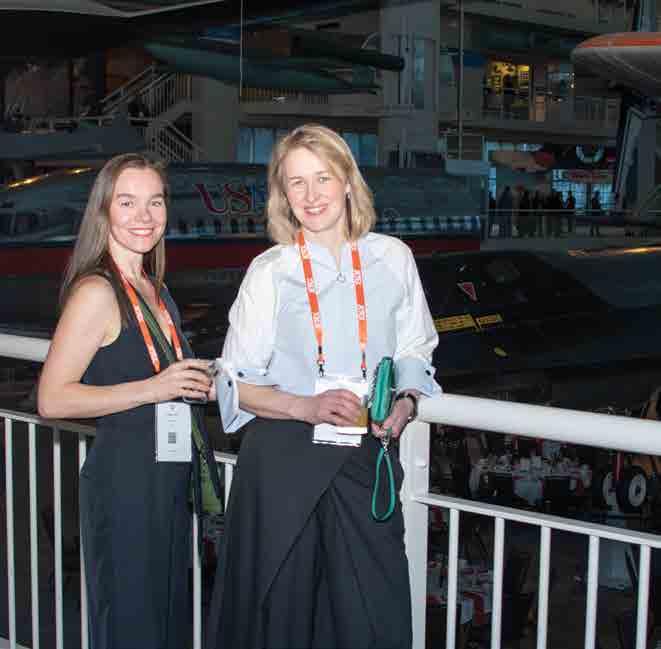
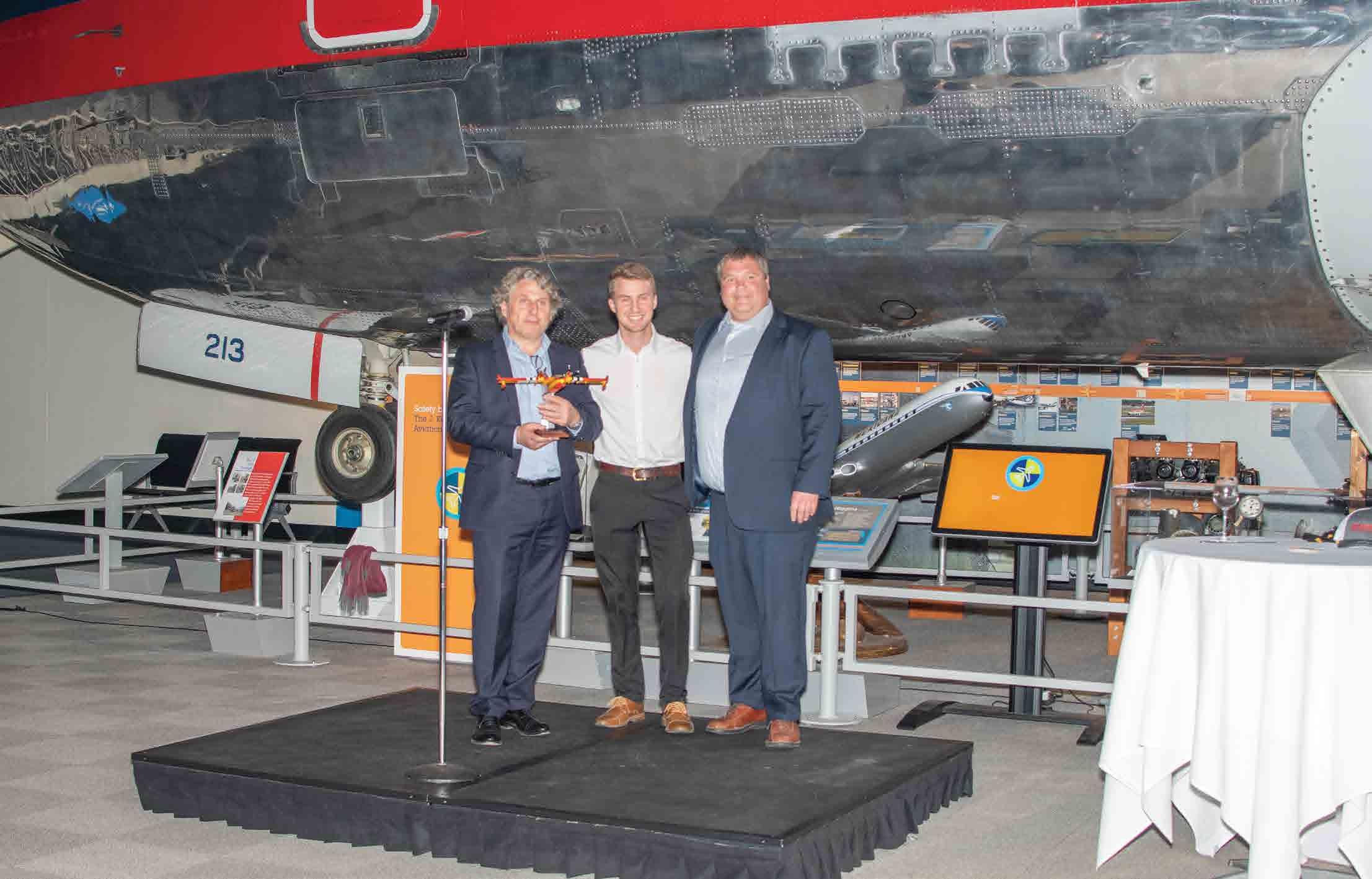
Also presenting on the first day of the conference was former Governor of Oregon Kate Brown, a panel on scaling for growth and redefining the role of aviation through the use of night aerial firefighting by one of the pioneers of night aerial firefighting, Brian Fennessy, the Chief of Orange County Fire.
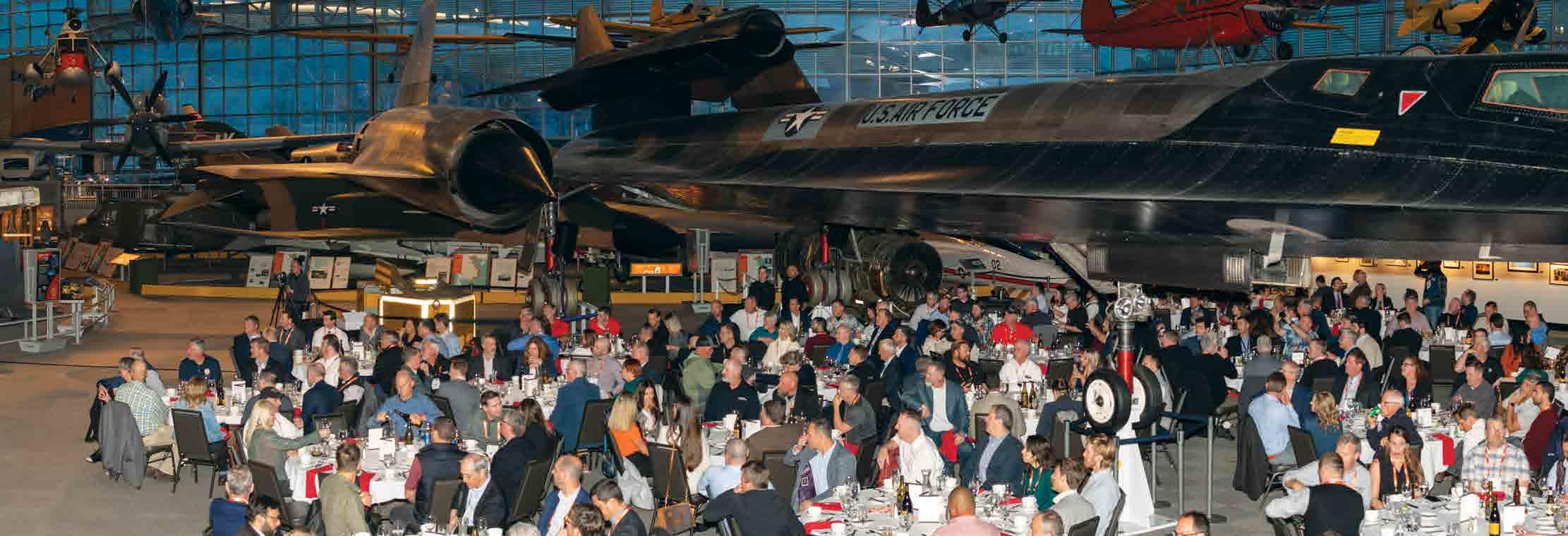
Another highlight of the opening days speakers was a speech from Ben Millington, Assistant Commissioner of the New South Wales Rural Fire Service, detailing the lessons his agency learned from the devastating fires of the 2019/2020 fire season that have spawned massive growth in the New South Wales Rural Fire Service aerial firefighting operation. ➤

Finishing out the first day of the show was a discussion from Perimeter Solutions Jeff Emery on their 60 years of providing fire protection through their PHOS-CHEK retardant solution, a panel on the opportunities of wildfire mitigation, and the event dinner, sponsored by Bridger Aerospace, held at the internationally renowned Museum of Flight in Seattle, where attendees dined under the fuselage of the iconic SR-71.



Day two of the show was another packed agenda, with a keynote speech from Sarah Fisher, Deputy Director of Fire and Aviation Management from the USDA Forest Service, followed by ‘Wildfire SOS’ presented by AerialFire writer Dan Reese, a 30-year CAL FIRE veteran, former CEO of Global Super Tanker and founder of International Wildfire Consulting Group. ➤






The largest attendance for day two was for a panel on Accelerating Wildfire Resources featuring Jennifer Draughton from Neptune, Bart Brainerd from Firehawk, Brett L’Esperance for Dauntless Aviation, John Gould from 10 Tanker, and Matt Isely from Erickson Aero Tanker. The panel was moderated by Tim Sheehy from Bridger Aerospace. It garnered significant interest from the attendees during the question and answer session.
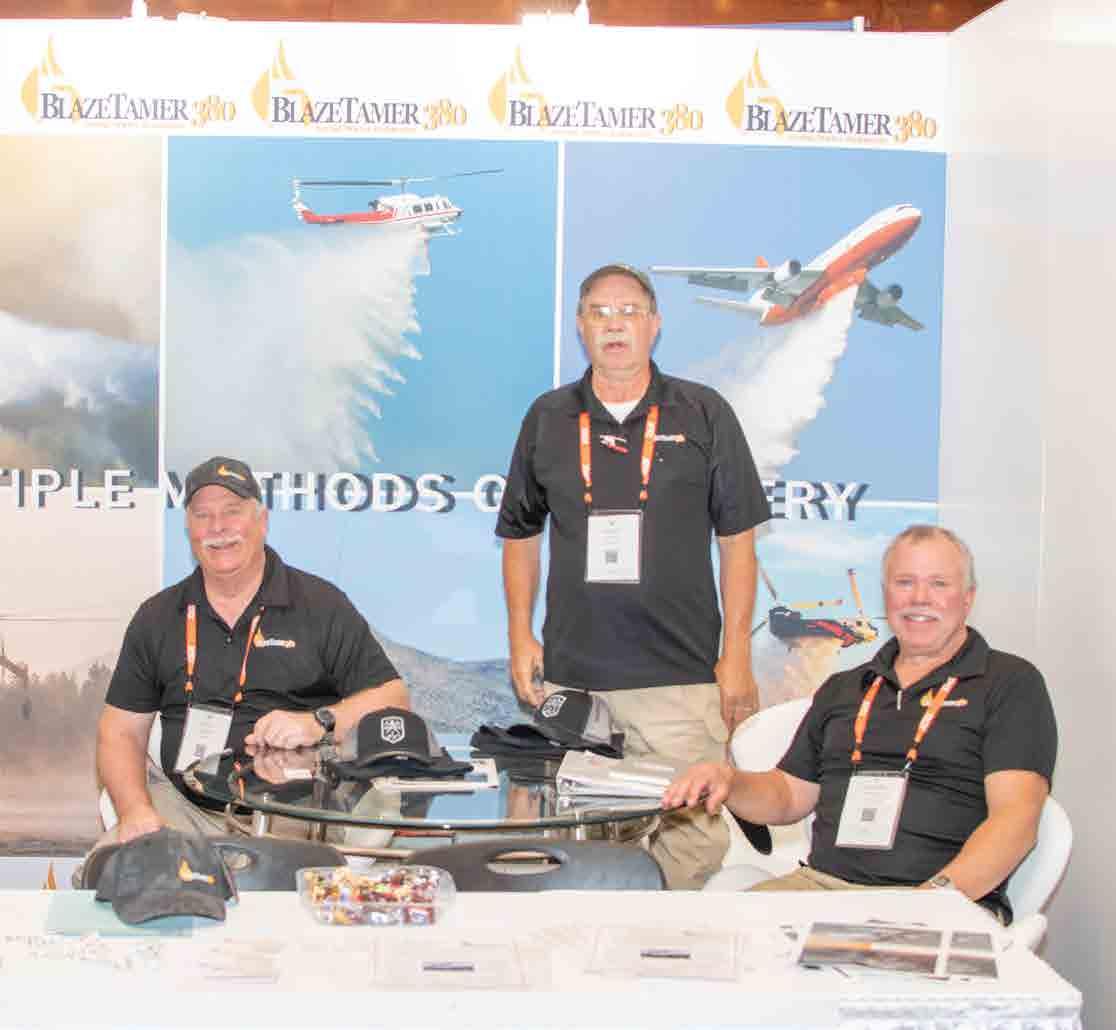
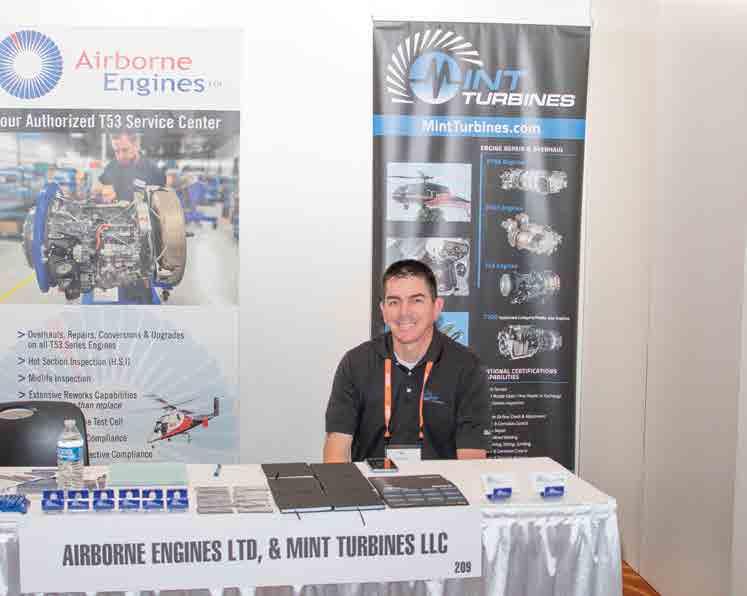

Overall, the show was yet another resounding success for Tangent Link, who, in addition to providing another packed agenda, saw record attendee numbers with 373 total attendees, which is well over the projected two hundred and fifty expected for the Seattle event in addition, the show hosted forty-eight exhibitors on the convention floor with fifty-four total speakers at the event attended by guest from fourteen countries. ➤

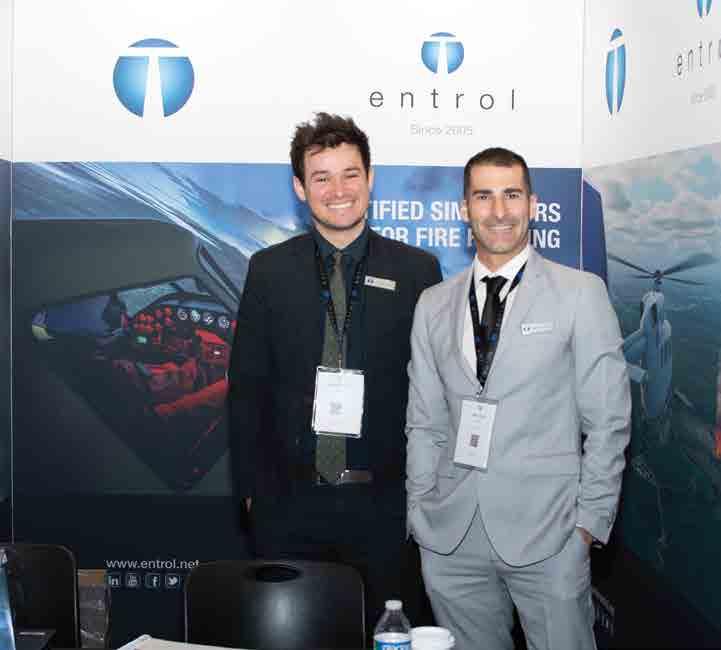
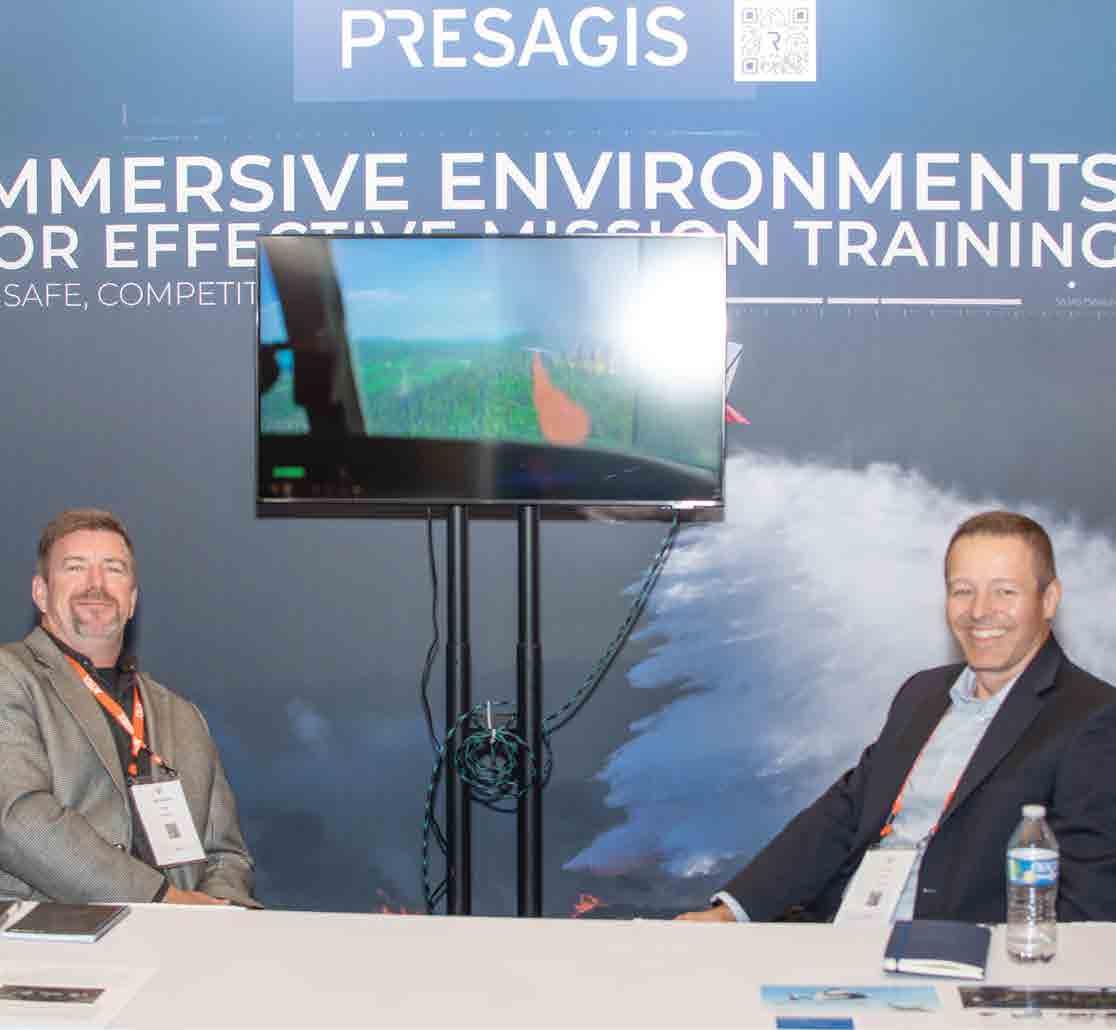


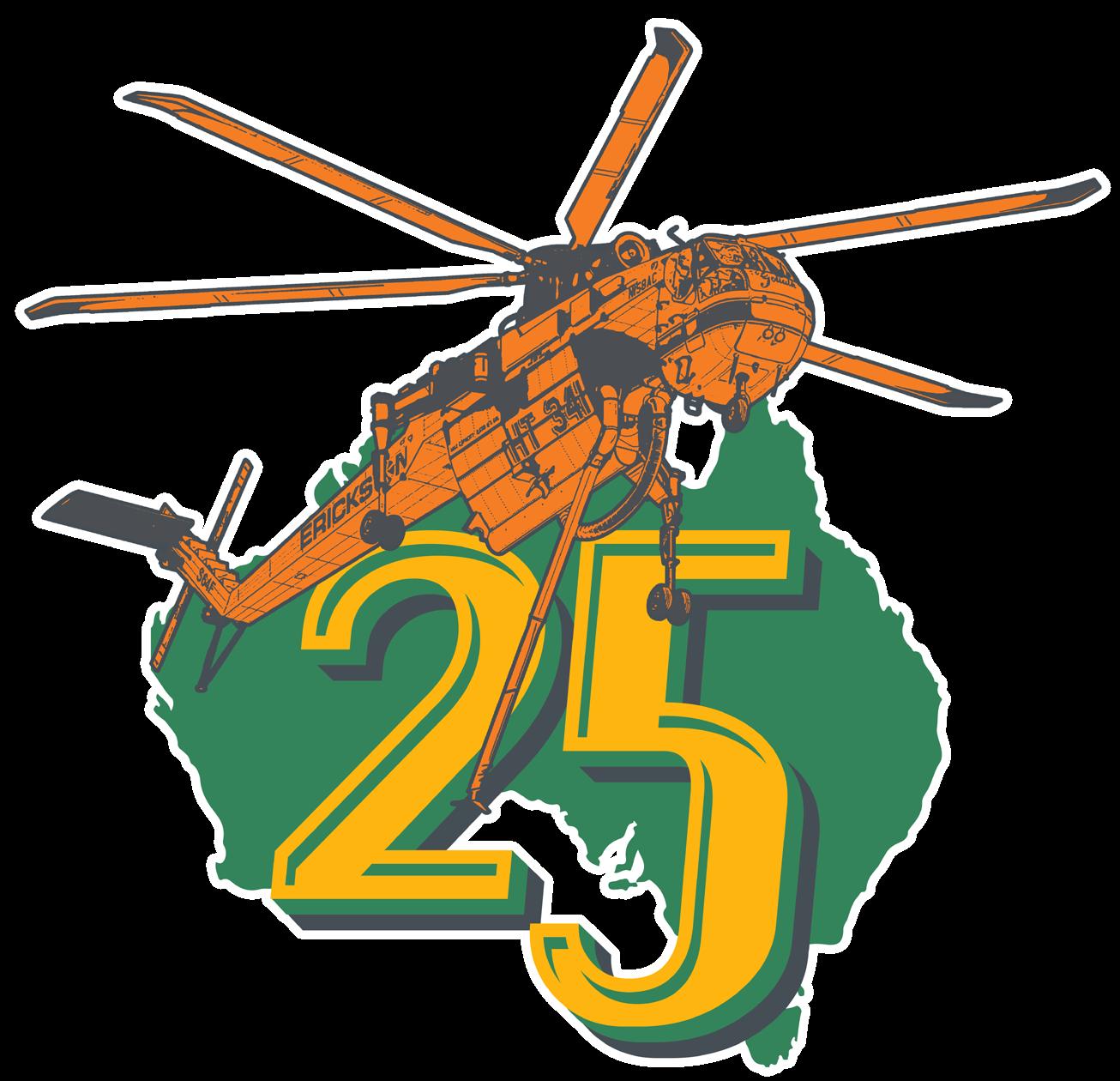
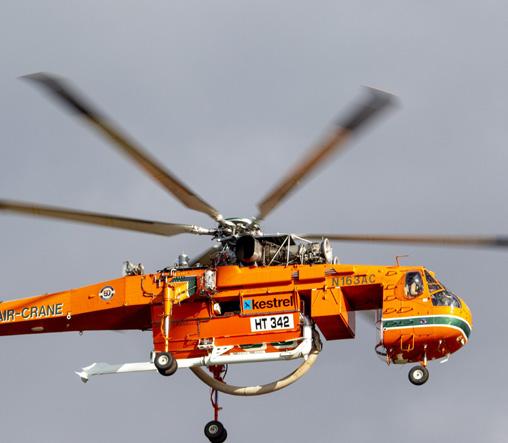

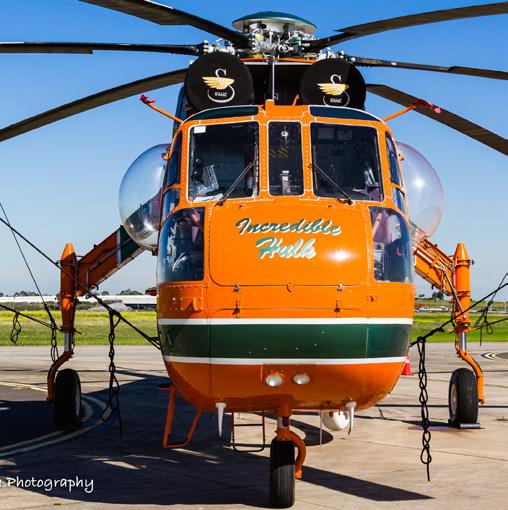

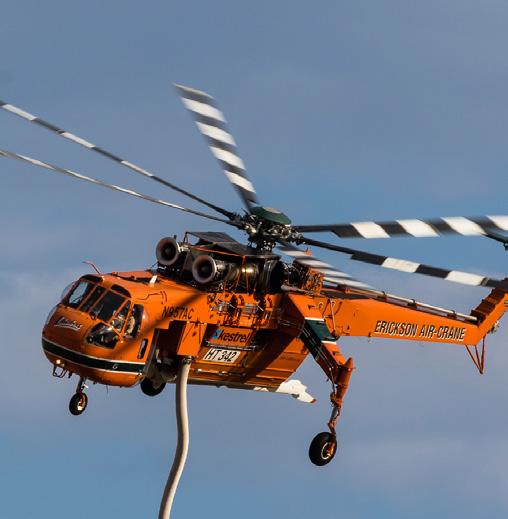





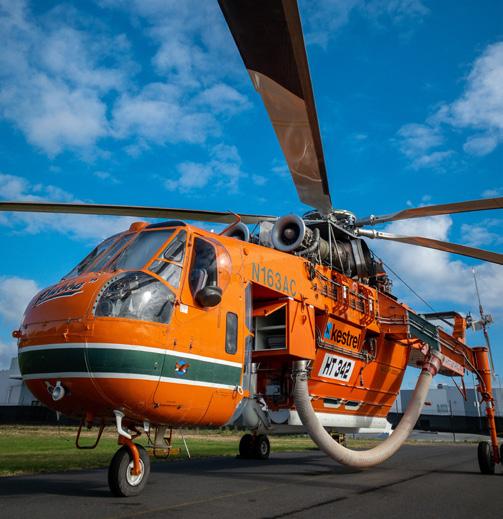
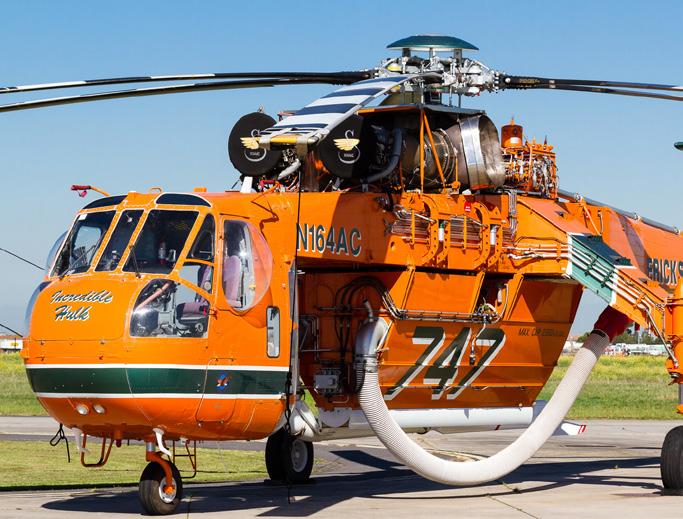




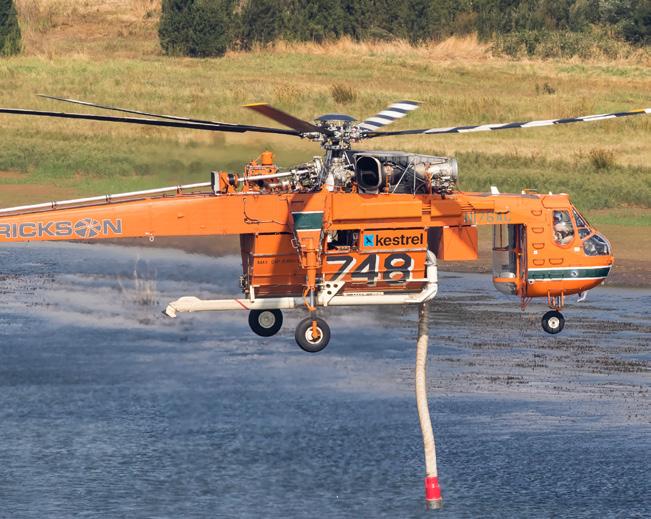


SINCE 1997 AND COUNTING
Dive into 25 years of partnership, collaboration, and dedication to the mission of saving lives and property throughout Australia.
To learn more and download the brochure, visit: pr.ericksoninc.com/aus25-aff

‘The Airborne Fire Fighting mission is now a North American mission, and working with Washington State Commissioner for Public Lands Hilary Franz and her team to deliver a PNW event was perfectly timed. We had a record number of enterprises and speakers/policymakers in attendance in Seattle. The response has been resoundingly positive, and we are grateful to Hilary Franz for her leadership in this event. In addition, UAFA’s formal launch at AFFPNW is a
major step forward,” said John Longhurst, CEO of Tangent Link, about this year’s Seattle show.



This year marks the largest for the aerial firefighting series of events for Tangent Link, hosting three events worldwide for the aerial firefighting segment, with shows in Dubbo, New South Wales, Australia, and Athens, Greece, still to come for the Asia Pacific and European shows.




To some, Tim Sheehy may be the new kid on the block in the aerial firefighting scene, but as an accomplished CEO, Sheehy has completed a lot of achievements quickly.
Coming from a Naval career, Sheehy was a Navy SEAL team leader who served multiple deployments in Afghanistan, which he credits for developing a great deal of the leadership skills he uses to continue to build and grow his company Bridger Aerospace.
Not being one to shy away from a challenge, Sheehy found himself after being medically discharged from the Navy after a battlefield injury in a position to start Bridger Aerospace.
“One of the main roles of a ground force commander, in addition to just being in charge of that task force, is to coordinate the air assets that you have. That can come in the form of surveillance, like a drone overhead. It comes in the form of pre-mission targets. If you know you’re going to assault a compound, you’ll want to get some drone footage of that ahead of time to know what you’re going to hit. And then, of course, during the mission, you’d have airborne surveillance helping you out throughout, and you’ll be able to see that imagery in real-time through a downlink on a tablet.”

“So I saw the force multiplying value of having an aircraft closely integrated with the ground team. And that would also eventually start coming in the form of close air support services, guns, and bombs being dropped as you’re in an active engagement. So, over the course of several deployments, I understood and valued the importance of a closely integrated air-ground Task Force, and then also saw what can happen when you were not closely integrated.”
“One of the times I was wounded was by friendly fire when an Apache fired a hellfire missile at a friendly location instead of an enemy location, so it landed right in the middle of a squad who were on an op trying to call in an airstrike on an enemy position. They shot at us instead, which, unfortunately, is a fairly common occurrence. “
“Oftentimes, that is the bigger killer, so I saw both the benefits and the threats. After I got wounded, got out of the military, and started Bridger, we created a division to take that aerial surveillance capability of airborne infrared electronic imaging and apply it to missions beyond combat operations. And wildfire was a distant reality that I knew of but didn’t know anything about. I certainly didn’t plan it to be our new industry,” said Sheehy. ➤
Sheehy’s previous company AVT which is still in operation today provided EO/IR products to both the civilian and military world. Story by Ryan Mason, Images by Bridger Aerospace
Bridger CEO Tim Sheehy is a hands-on leader and is also a qualified scooper pilot and can often be found flying the company’s aircraft on fires.
Story by Ryan Mason, Images by Bridger Aerospace
Bridger CEO Tim Sheehy is a hands-on leader and is also a qualified scooper pilot and can often be found flying the company’s aircraft on fires.
In 2015, Bridger Aerospace, although initially targeting its work towards border patrol and law enforcement operations, the company took up its first fire contract with a piston commander aircraft on a contract conducting air attack work for the U.S. Forest Service, firmly cementing their business model at the time providing sensor technology and aerial firefighting contract services.

In 2016, while realizing that the company’s sensor and infrared technology was still not readily understood by the Forest Service, it was, however, being noticed by the United States Department of Defense. The DoD was paying attention to the company’s sensor and IR capabilities and the company’s video stabilization and tracking software. Such was the nature of this business that required structuring a new company to break away from Bridger, named Ascent Vision Technologies(AVT.)
AVT was formed to address EO/IR market needs that, as a SEAL team leader, Sheehy was only too familiar with and wanted to improve on the battlefield for the warfighter. The company would make EO/IR gimbals and associated software as it rapidly grew alongside Bridger.
“For a time there, I was co-founder and CEO of both AVT and Bridger. And obviously, that was challenging for years because I was managing two rapidly growing companies and what was becoming two very distinct industries because they quickly took off. We became about a 100-employee company very quickly on the AVT side as Bridger was roughly becoming the same size.”
AVT would manufacture hardware and software for the United States Marine Corps, Air Force, and several other foreign militaries over the next few years, seeing the company become the largest gimbal provider for the DoD.
AVT would provide systems able to spot small commercial drones being used by ISIS on the battlefield along with several jamming devices and kinetic weapons, allowing the shootdown of enemy drones.
In 2020, Sheehy would go on to sell AVT to CACI for a $350 Million cash sale, enabling him to focus solely on the growth of Bridger, which had also continued to grow alongside AVT. “I was at heart an entrepreneur and a field leader, and that business was becoming kind of a defense contractor, and that’s more program management, budget meetings, which wasn’t my expertise. So the right thing to do was to take that capability and pass it on to a company with more expertise in program of record oversight and defense contract management.”
At the same time, Bridger had grown its air attack fleet from having three piston commander aircraft to six turbine commanders. Shortly after that, moving on to investing in a Kodiak fleet, investing heavily in providing the business’s most modern air attack fleet.
At that stage, Sheehy identified a gap in aerial firefighting operations: the need for scooper aircraft in the United States that were being utilized worldwide but sparingly in the United States. The next step for Sheehy was convincing DeHavilland of Canada to reopen the production lines to start producing the CL-415EAF for Bridger, which had been in mothballs for almost a decade. The company agreed, beginning to produce the most modem scoopers in the world for Bridger, initially delivering two scoopers, which grew to four in 2021, and now six at the beginning of 2023.
The scooper assets now join the company’s large air attack fleet, three Pilatus PC-12’s and a large UAV fleet that provides services in almost every aspect of aerial firefighting. ➤
Cascade Pressure Cowl Delivers!
u Increase in Clean Air Volume to PT6 engine
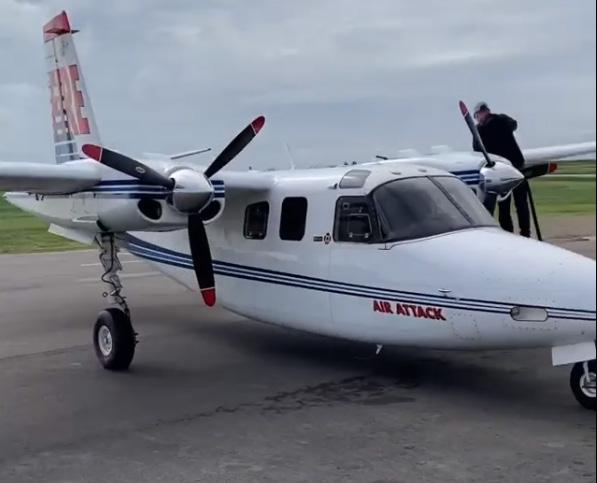



u Decrease up to 32⁰ ITT Temps
u Decrease up to 1.5% NG

u Easy Access to Service

Air Filter System ( Filter swap - 20 min)
Fuel Nozzles
Chip Detectors
Pilot Report: “Before the Cascade Pressure Cowl, this FIREBOSS was always at the back of the pack. Cascade Pressure Cowl installed, it’s always at the front with our best performing FIREBOSS! Performance is everything! ”
ProtectingthePT6ATurbineEnginefor21Years!
www.cascadeaircraftconversions.com 903 Grinnell Rd. Garfield, WA 99130 | PH. 509.635.1212







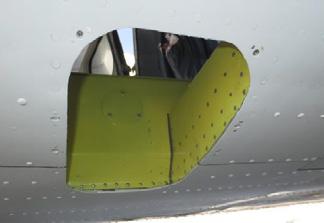

For over 30 years, ISOLAIR has been manufacturingindustry leadinghelicopter systems for the firefighting, forestry and aerial application industries. With a broad line of certified and custom helicopter equipment, ISOLAIR has the system to fit your company’s needs.Fromagricultural spray systems and bucket spreaders to firefighting systems, forestry grapples and torches, ISOLAIR can and will do it all!


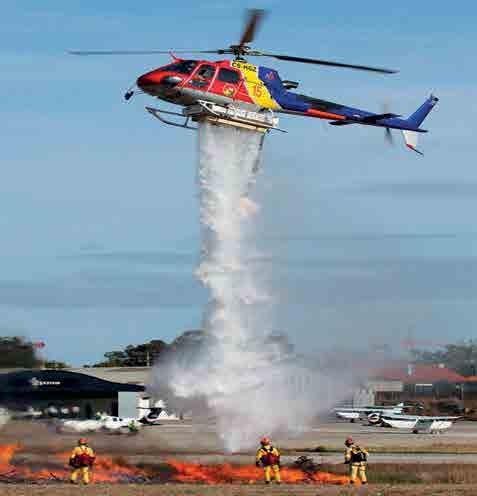
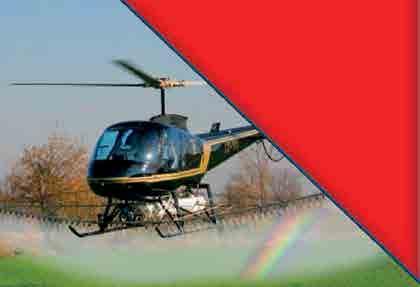

and torches, ISOLAIR can and will do it all!
With competitive pricing, quality assurance, easy to install products, and an ongoing commitment to customer service, we welcome you to contact us. Our friendly and knowledgeable staff is ready to answer your questions and help you find the ISOLAIR system that will best meet your operational requirements. ISOLAIR

With competitive pricing, qualityassurance, easy to install products, and an ongoing commitment to customer service, we welcome you to contact us. Ourfriendly andknowledgeablestaff is ready to answer your questionsand help youfind the ISOLAIR system that will best meet youroperational requirements.

Sheehy still lives where the company was founded, in Bozeman, Montana, with his wife, a former Marine, and their four children, aged 9,7,5 and 3, on their farming property in Bozeman.
“We are farmers and ranchers ourselves, we share a love of the environment, and we are proud of that, which is why we love aerial firefighting as it protects the environment. Our kids ride horses and mend fences with us on the property. We keep them involved in the business and treat our business like family. We are almost 200 employees now; we try to include everyone in events and our holiday parties. And kind of tried to keep that family atmosphere at Bridger, and I’m really proud of that. We have only had a 7% employee turnover over the past four years. When most businesses have averaged a 30% turnover in the past couple of years. We’re pretty happy with that environment.”
Bridger Aerospace also completed an IPO after a recent consolidation merger with Jack Creek Investments that saw the business listed on the stock exchange. Sheehy sees it as a huge chance to give back to his employees via stock options and another way to continue to grow the company.
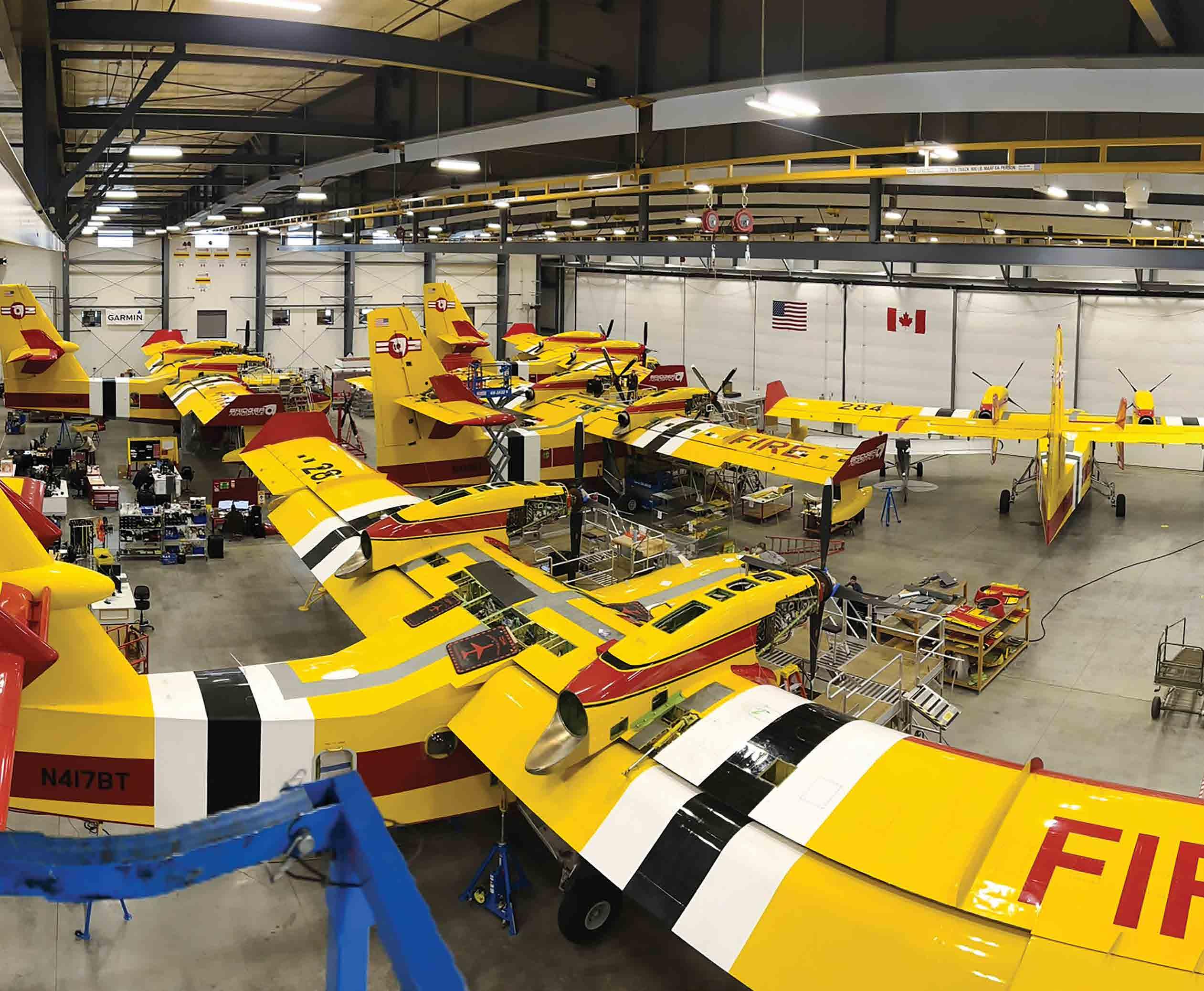
“We wanted to be able to continue to grow. Small business regulations that govern our industry are burdensome. It’s hard to get growth capital and remain a small business. So going public was the best way for us. It’s been great so far, and we think it will be a great way to reward our employees with their stock, of course, so that they can be a part of that journey.”
Bridger continues its rapid rise to be one of the most innovative companies in the industry. Sheehy shows no signs of slowing down as he continues to build Bridger into an industry juggernaut that will continue to be one to watch as it builds on previous successes and creates new opportunities.









Merit Apparel Company Inc. is a family-owned and operated business celebrating 29 years of business, with 25 of those years supplying the industry with Merit Helmets, a division of our business created to provide customers with the MSA Gallet Aviation DOI Certified Helmet.

First, we want to personally thank each and every customer and company that we have had the privilege to work with
over the past 29 years. Without you, we would not be where we are today.
Over the past 25 years, we have diversified our product line to meet our worldwide customers’ needs, including BOSE ANR, CEP, BluTooth, Talk Thru, NVG-ready components, respirators, touchscreen nomex gloves, as well as “thinsulate” touchscreen nomex gloves and much more.






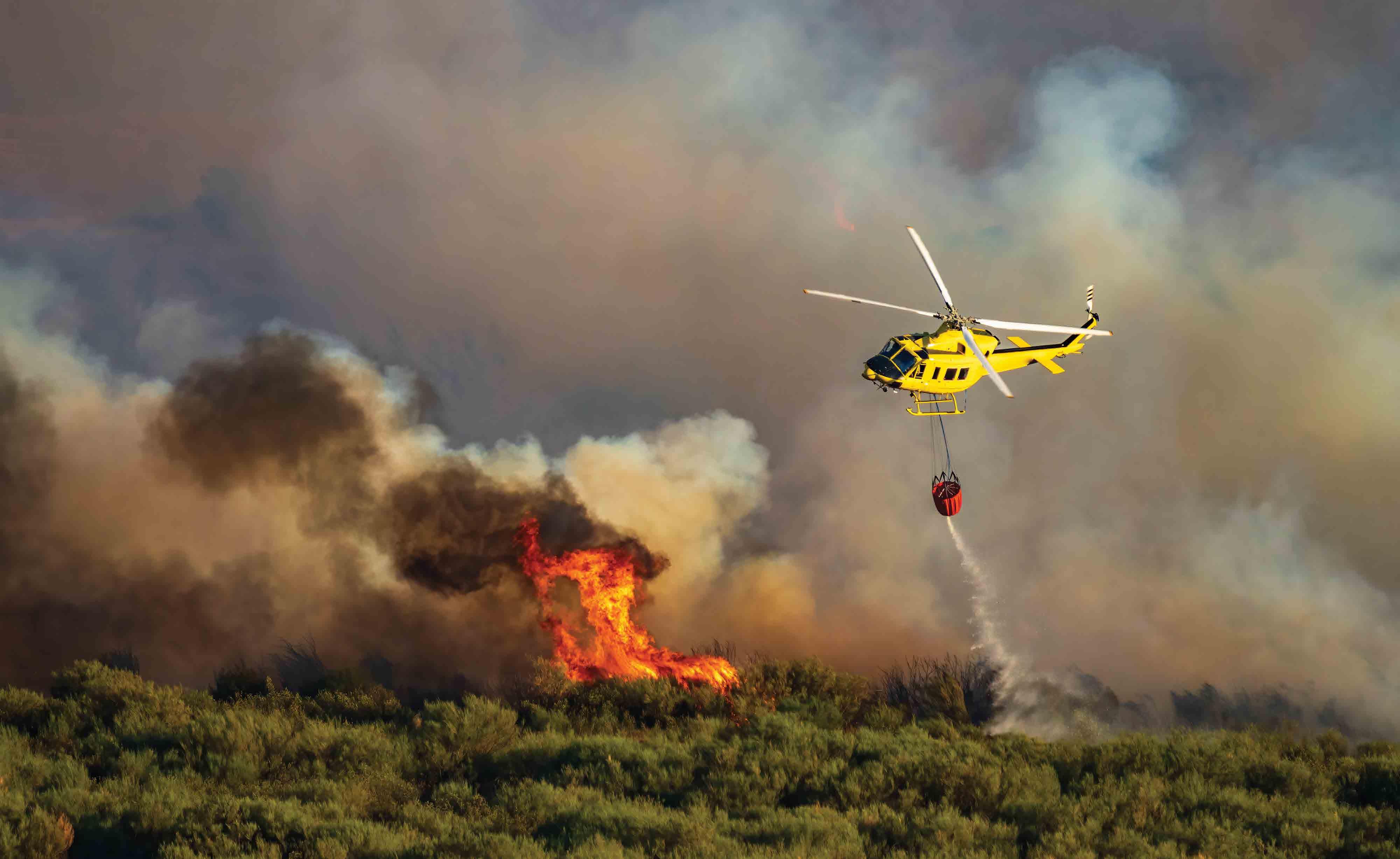




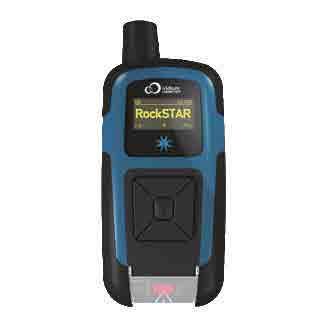



One of the keys to our success and growth is our attention to detail to customize the helmet to meet each of our customer’s needs. If you want to buy one helmet or 500 helmets, you will receive the same high level of information and service we are known for.
Purchasing a helmet is an expensive, important, and typically a long-term commitment, so educating you first about the various options that will work best in your environment is our first job. Once we have determined your needs, the second most important goal is your fit. Our helmets are a long-term investment since their shelf life exceeds our competition. Your Merit MSA helmet can last you more than 15 years as we have had helmets out there for two decades+. Unfortunately, today we have found many helmet users wearing helmets that are not comfortable. We have customers wearing our helmets for 12 or more hours a day. If your helmet is uncomfortable, you are miserable
at the end of the day; this is why we have designed and instituted a helmet fitting system that assures our customers’ comfort even on long days.
Most Merit customers fly for a living, so selling you a helmet is only the first step in our relationship. We are here to support you for as long as you own your helmet and thereafter. We keep the most extensive inventory of parts worldwide, so we can ship parts quickly to keep you flying. Our company philosophy is to provide you with the safest product with ultimate satisfaction. Merit has emerged as ‘world renowned’ for our customer service and support in the aviation industry.

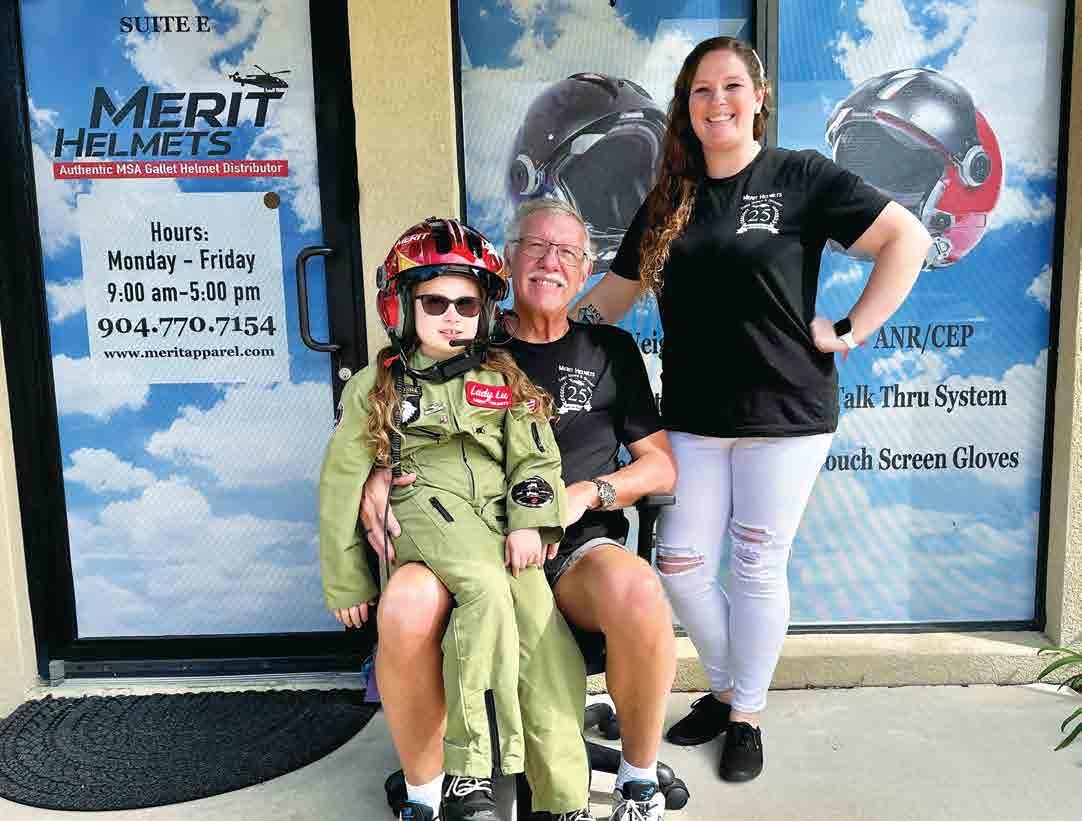
Merit is constantly evaluating new products to improve and expand our product line. If you want to purchase a helmet or refurb an existing MSA helmet, please get in touch with us and join the ever-growing family of Happy Heads!
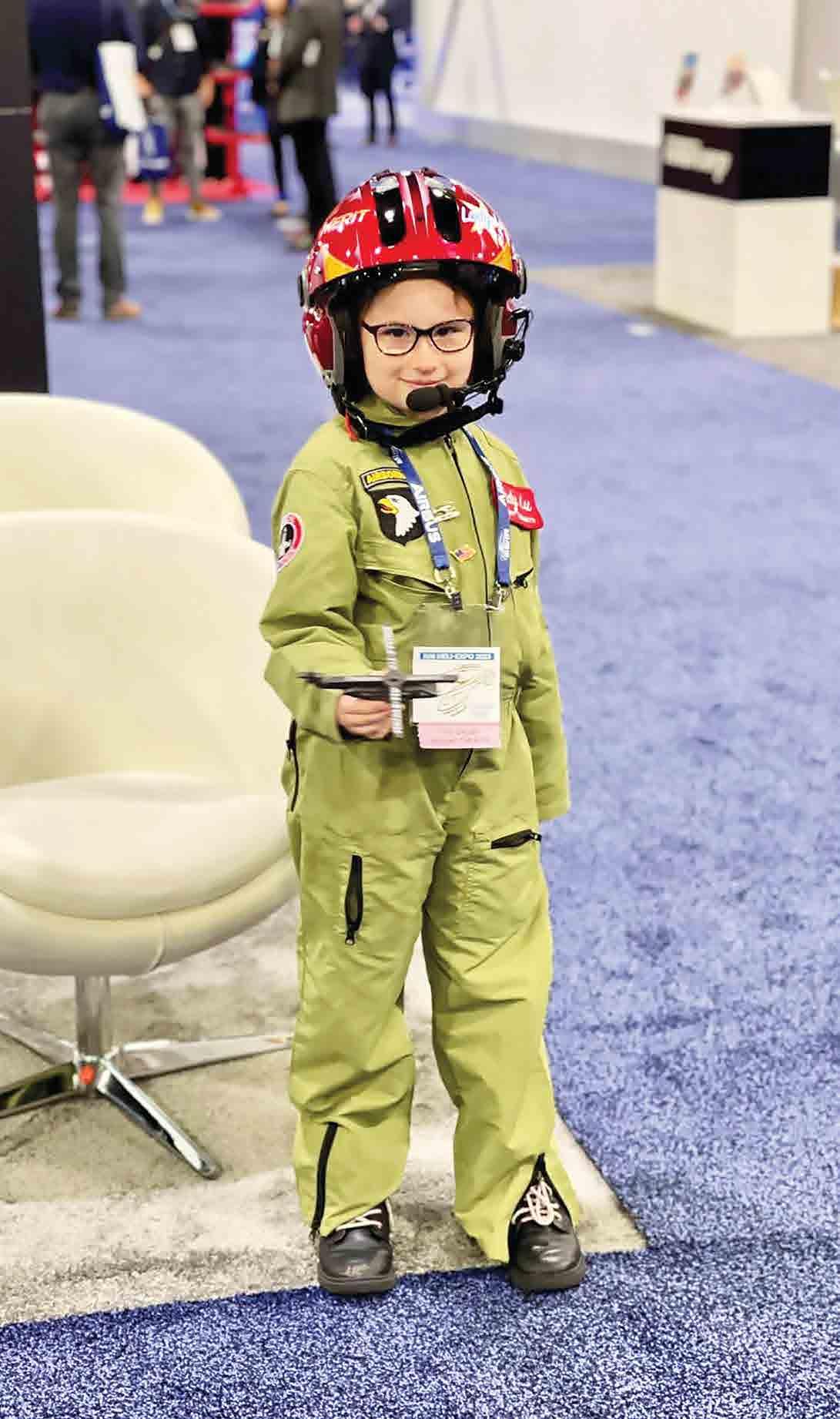


Rapid-response attack aircraft can make a decisive impact during the most critical stages of a wildfire. Season after season, dollar for dollar, hour for hour; the Air Tractor® AT-802F proves its value.
